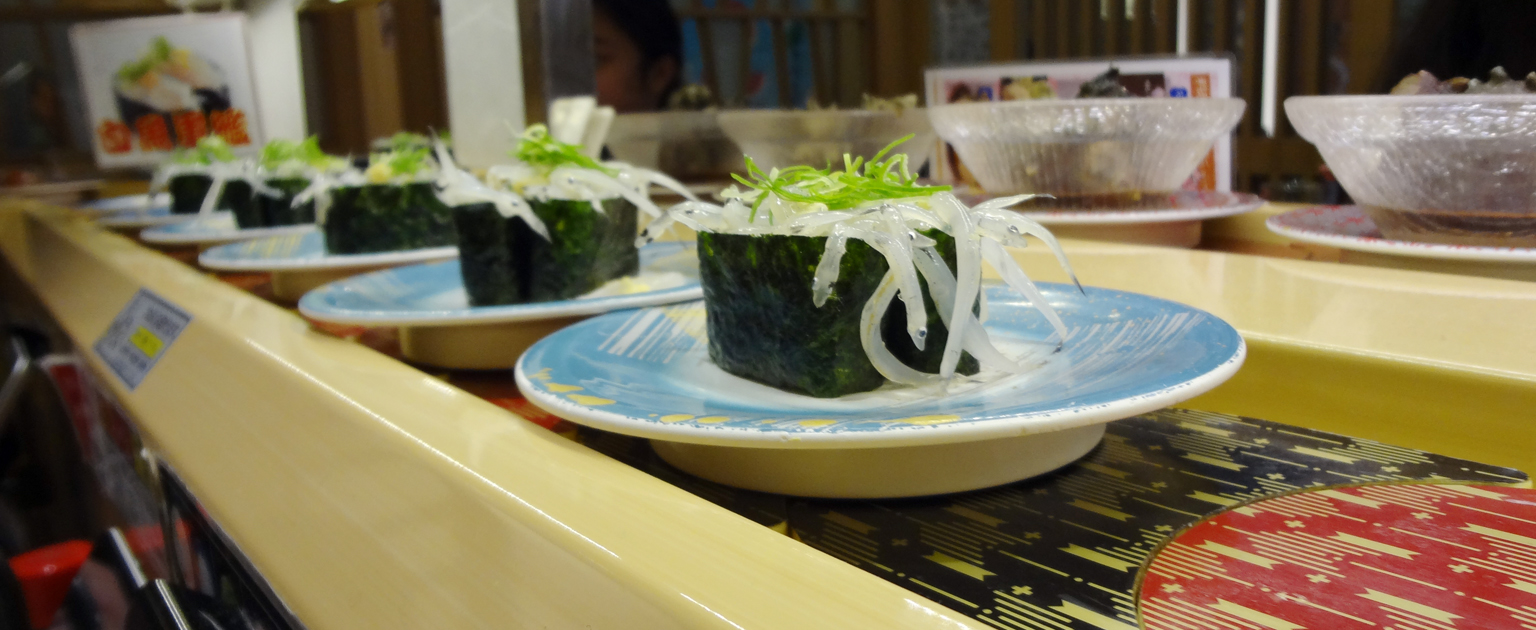
What follows will be a whirlwind recap of our dining experiences in Tokyo. One of the first things I learned about food culture is the prevalence of replica food. Replica food is a whole sub-industry in Japan because most restaurants utilize them to show off their products.
The next thing is something we’ve probably all heard about before – the vending machines! There really were a lot, even in residential areas. We had a fun time trying as many things as we could, including both hot and cold drinks and ice cream, right from the machines.
Vending machines may still be involved even at sit-down establishments, like small ramen shops. Vending machines stand outside the entrance, so the ordering takes place at the machine, eliminating the wasted time of ordering and exchanging money in person. This keeps business brisk, which is important to small shops during peak hours.
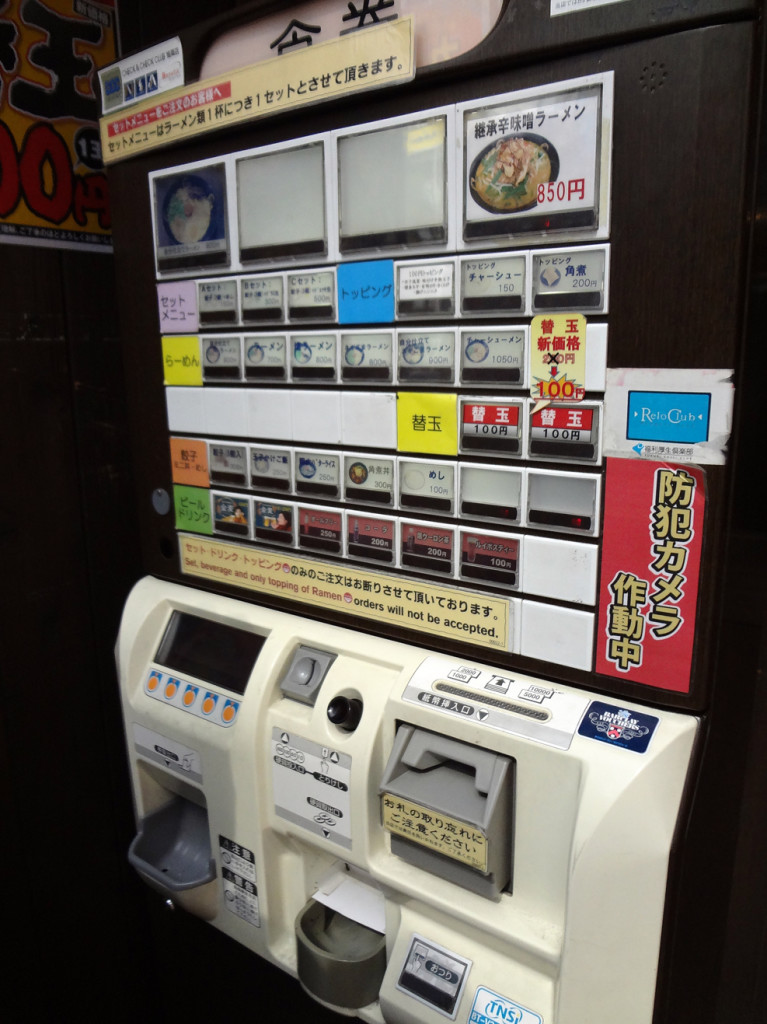
Food ticket machine for ramen. There are some pictures of the food.
While we sat and waited for our food at these ramen restaurants, there were often people lining the benches or even standing, waiting for there chance to sit up at the bar and be fed. It was definitely a unique experience to have people not only waiting for me while I ate, but doing it right behind me, not five feet away! Not exactly relaxing, but darn tasty.
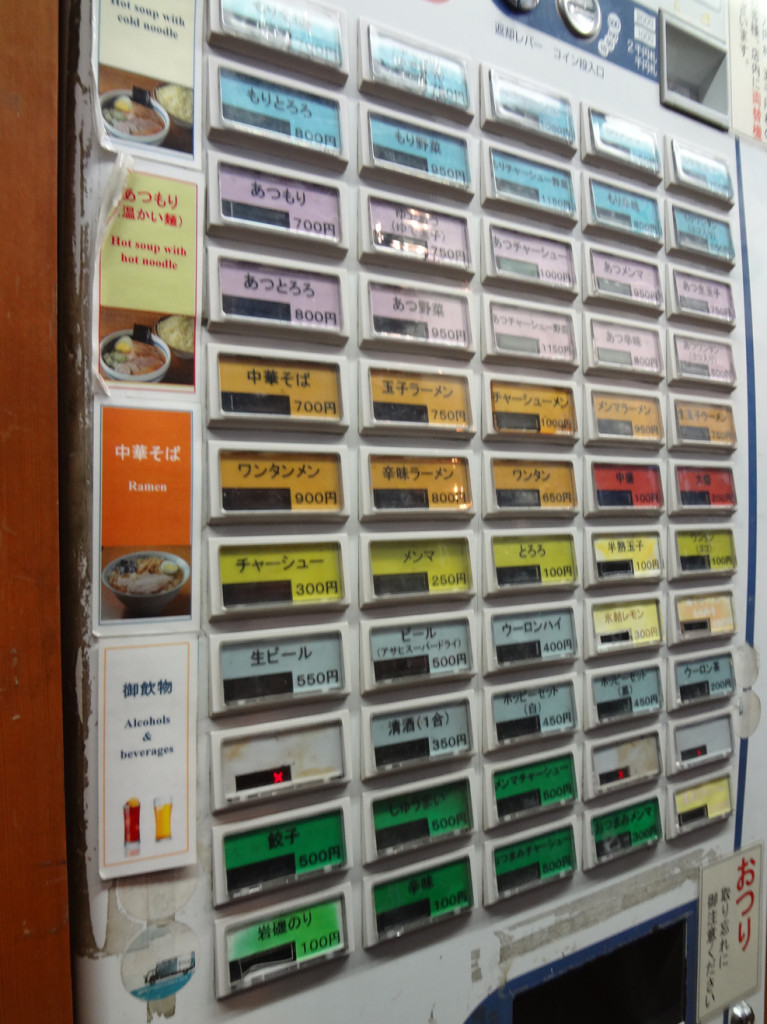
Another type of ticket machine for ramen… this one without as many pictures. We had fun guessing.
And it was the most mazing ramen we had all trip.
Seeing american brands in Japan was pretty entertaining. Over there 7-11s are a pretty big deal, and they serve fresh foods, too! While we stayed in Tokyo, we swung by the 7-11 every morning to take out the day’s cash and grab breakfast – and a few cans of Chu-Hi. And maybe a green tea Kit Kat, cream-filled melon bread, or a novelty ice cream.
We saw a few KFCs, as the Colonel’s Kentucky Fried Chicken is fairly popular in Japan. I’m not sure which I enjoyed more at the KFC we found in Akihabara, the backward sign of Goku hawking drumsticks, or the definitely asian-looking Colonel statue in a weird, reaching position.
While we weren’t very interested in eating KFC or McDonald’s in Japan, we did take in a little americana at Beersaurus, an american beer bar with a dinosaur theme. We still ordered japanese beer though. Who wants to fly around the world and drink an imported Sam Adams? I’ll take the token japanese beer, please.
One of the culinary highlights of the trip was kaiten-zushi – also known as conveyor belt sushi – a fast food sushi restaurant where the plates with the sushi are placed on a conveyor belt that winds through the restaurant past every table and counter seat. The restaurant we went to featured a conveyor belt arranged the the shape of an H, with the cross-piece of the H being the preparation area where the sushi was made and other foods were plated up. The rest of the H was lined with tables.
Each table had its own hot water tap, powdered green tea, and iPads for special orders, more or less eliminating the need for a server.
For special orders, there is a little wooden rail system running along the top of the housing of the conveyor belt with little plastic tray traincars that will stop in front of your table with your special order. Simply grab your food from the plate and push a button to send the little cars home. Again, no human interaction is required.
We had a great time picking things off the belt and selecting some choice special orders. Because we chose one of the nicer and more popular places kaiten-zushi places – Umegaoka Sushi no Midori – the food was really nice. There was also a 20+ person wait every time we walked by the restaurant (located on the eighth floor of the Seibu department store) during the course of our trip.
The only thing I had thay I didn’t like were the sea snails, and that’s probably just because I am not cut out for digging out my own little cold, snotty sea snails. Bleh. Everything else was really great!
We did have a little foreigner mishap though. We saw ice cream on the belt, and I wanted to try it. What I should have done was grab the iPad and order ice cream from there. What I did instead was pull the little plate without thinking and then wound up having to call for help on the iPad because now I was just holding a little plat with a carboard picture of ice cream. D’oh. It was slightly awkward. So, don’t make our mistake if you ever find yourself at kaiten-zushi.You know how much each item to grab off the conveyor belt costs because the plates are color-coded and there is a key at each table so you know what price each color represents. The plates also have RFIDs in them, so when we were done, a server came buy with a scanner and just ran in down the sides of stacked plates to come up with the total owed.
It was definitely a fun japanese dining experience, and surprisingly cost effective, given that we treated it like an all-you-can-eat buffet. If you’re ever int he vicinity of the Ikebukuro Seibu Building, give Umegaoka Sushi no Midori a try.
Another place we tried was Coco’s Curry House, a japanese curry chain. The food was good, but my favorite thing about this place was the menu, with an amazing heat level chart from -1 to 10. The cute little pictures and the descriptions are a hoot!
Another restaurant chain we tried was Sushiya-Ginzo, a sit-down sushi place. The Akihabara location we went to was sitauted under the train tracks, which was kind of neat. We had an amazing and quite reasonably priced lunchtime spread there, complete with some shochu and some great house appetizers. Besides the typical miso soup, we also received an egg custard – chawamushi – which was very interesting.
Besides the sushiyas and ramenyas, another type of establishment we frequented in Tokyo was the izakaya, a drinking restaurant that features a menu of shared small-plate dished designed to be be munched on whilst drinking. All the izakayas we went to had tatami floors with modern tatami seating (pits under the table), lockers to store your footwear in, and courtesy footwear to wear to the restroom. They also had groups of loud, singing/chanting/yelling drunken businessmen. Which was awesome.
The first izakaya we went to was Watami, a 600+ location chain we patronized twice while in Tokyo.
We also tried another izakaya chain called Tsubohachi. We either ordered better at Tsubohachi, or Tsubohachi was a better restaurant. The chain is based out of Singapore and has more than 400 locations in Japan. We had a great time drinking shochu and whiskey and chowing down on thick-cut bacon, squid, and yakitori, among other things.
After allllll of the above I’m sure this goes without saying, but if you go to Japan, go prepared to eat. After about two meals in Tokyo, I didn’t have the physical sensation of being hungry until two days after I returned to the states. We were consuming three full meals plus snacks and drinks every day… it was intense. There’s so much I couldn’t include in this epic post.
But Adam and I agree, the one of the driving reasons to travel is food (the other driving factors being culture and sight-seeing), so I have no regrets. With a little diligence, I even had the five pounds I gained there worked back off within a couple months of the trip! So go, go, go and eat, eat, eat!
emily
Nerd. Foodie. Gamer. Homecook. Perpetual planner. Gardener. Aspiring homesteader. Direct response graphic designer. I use too many damn commas.
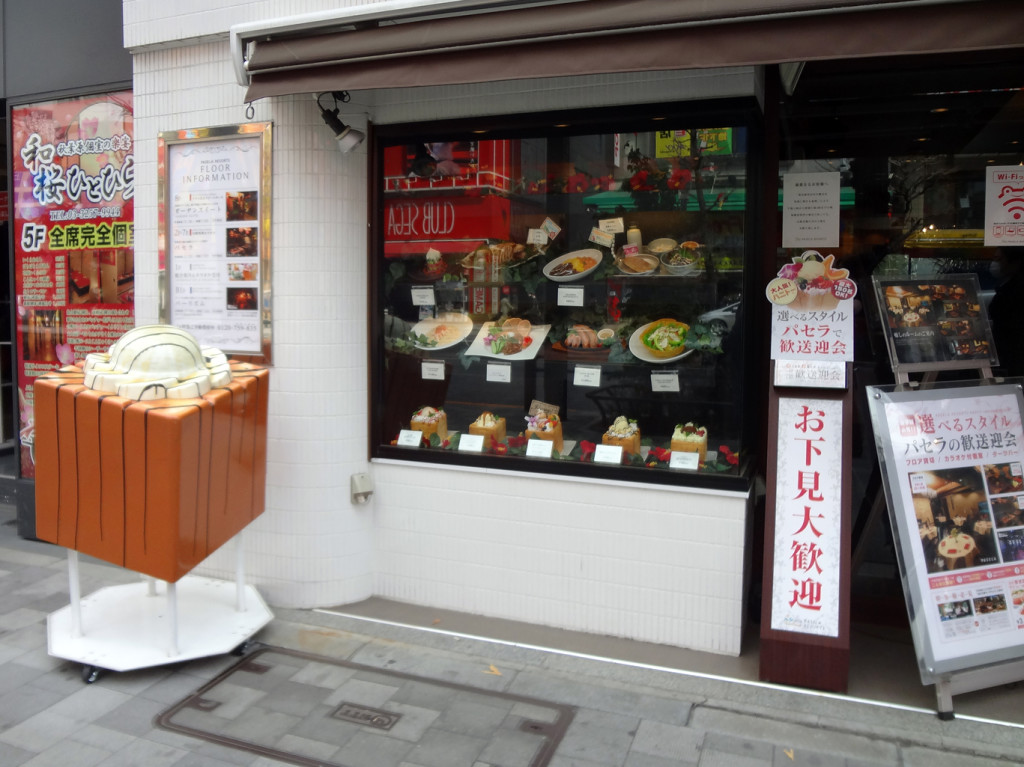
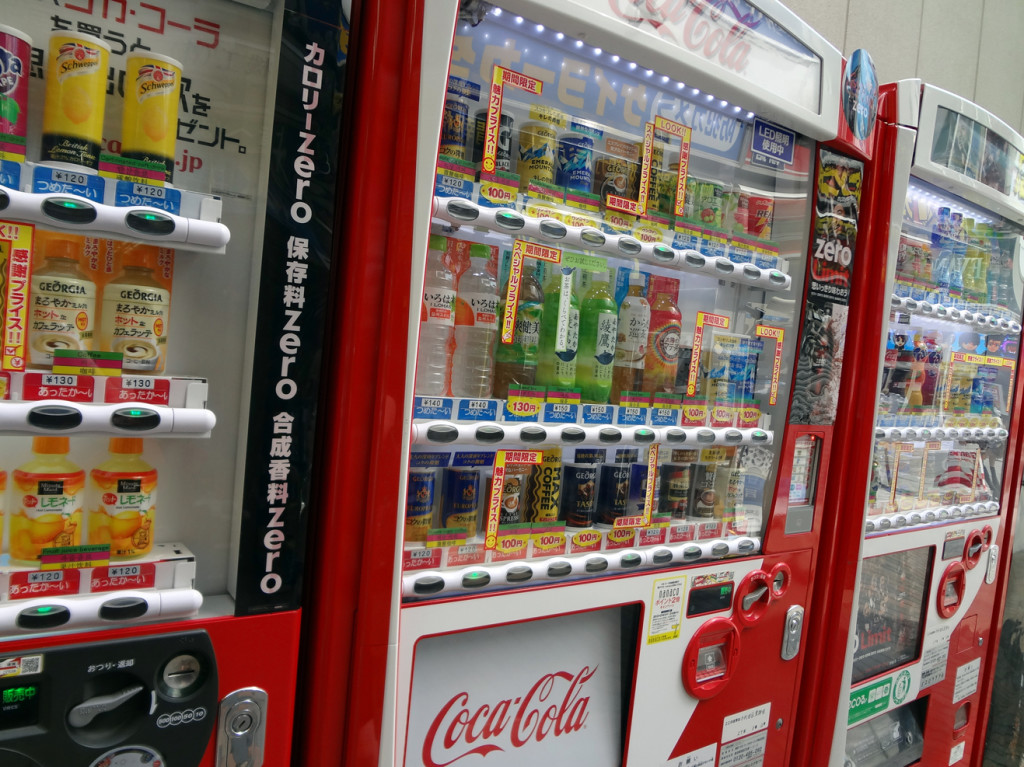
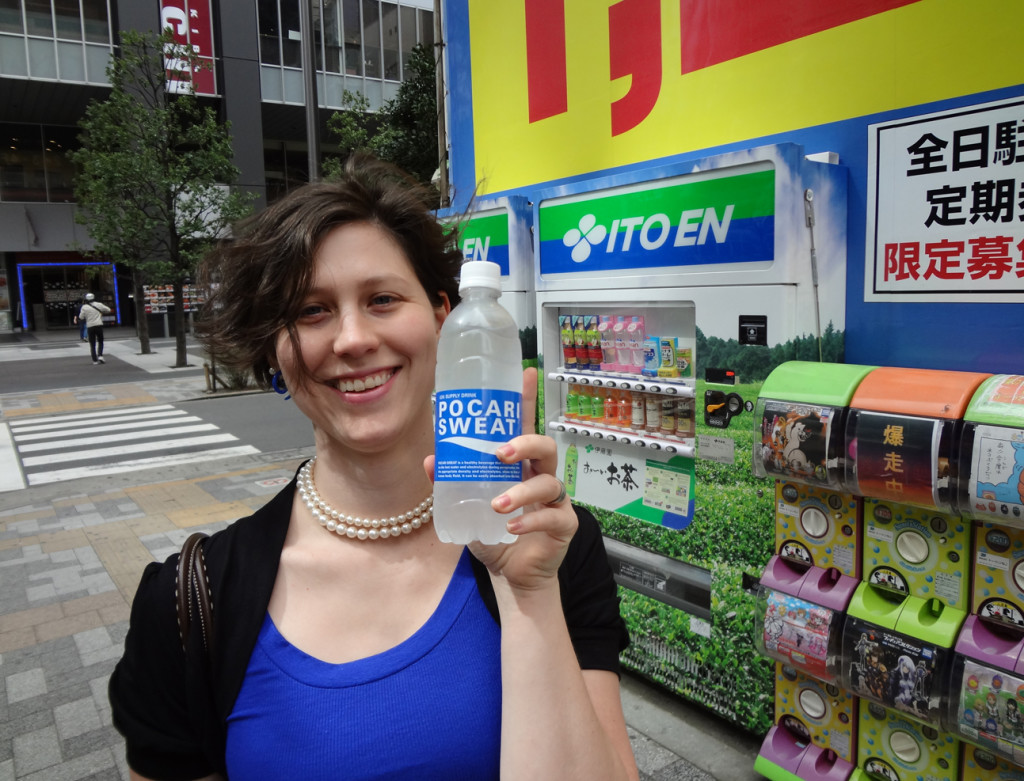
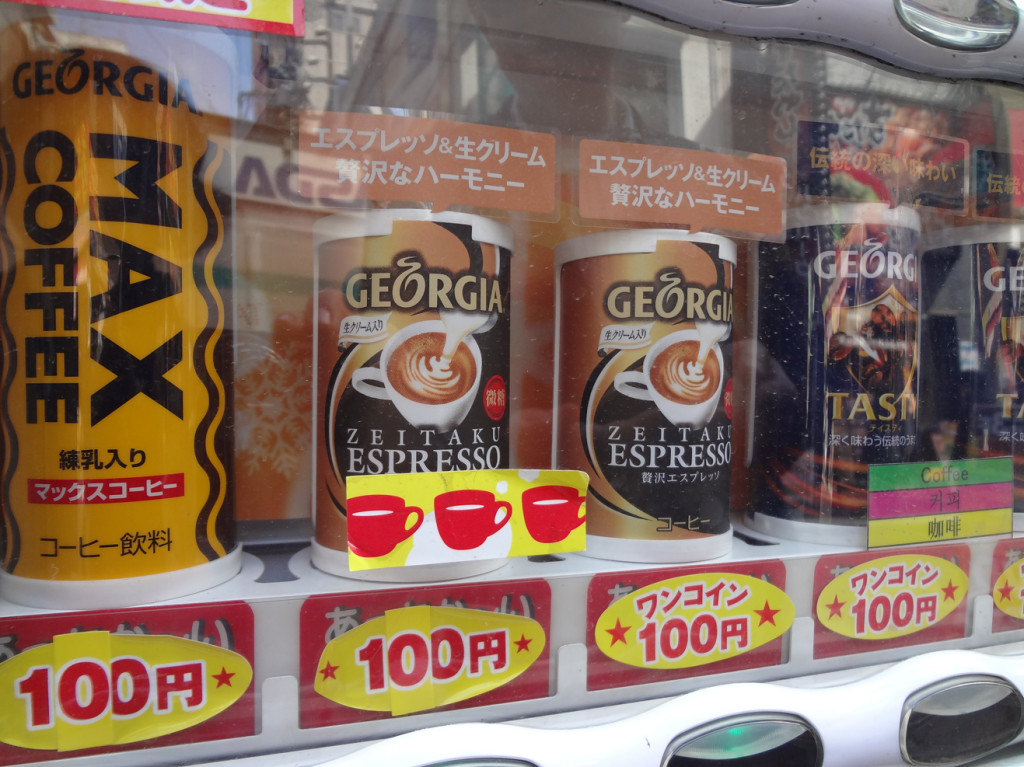
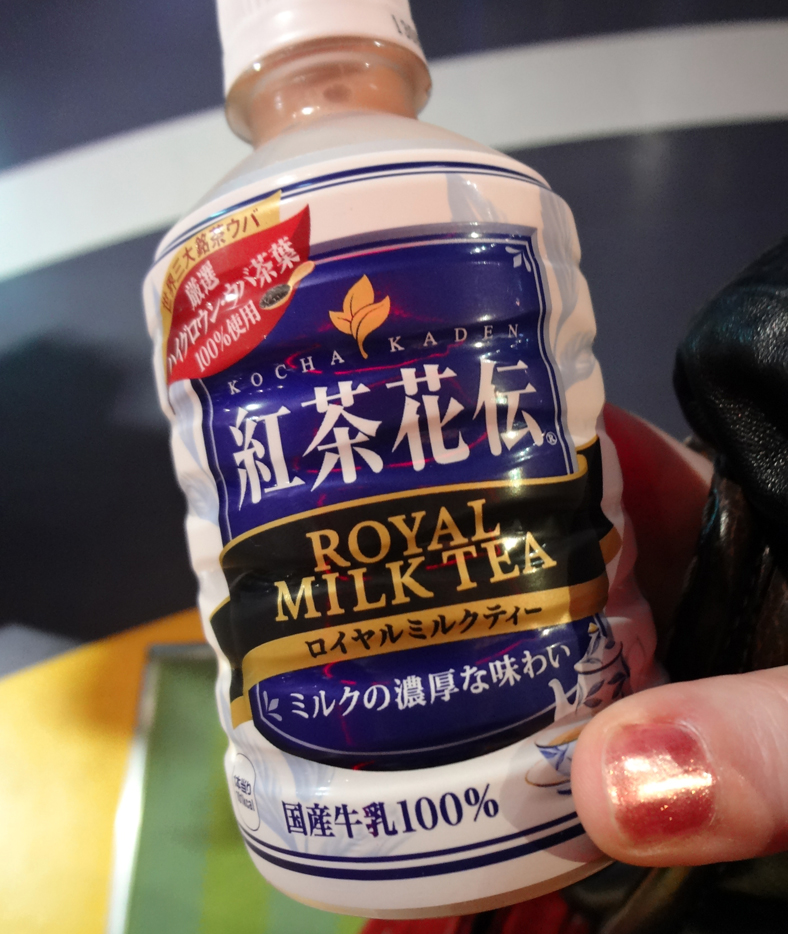
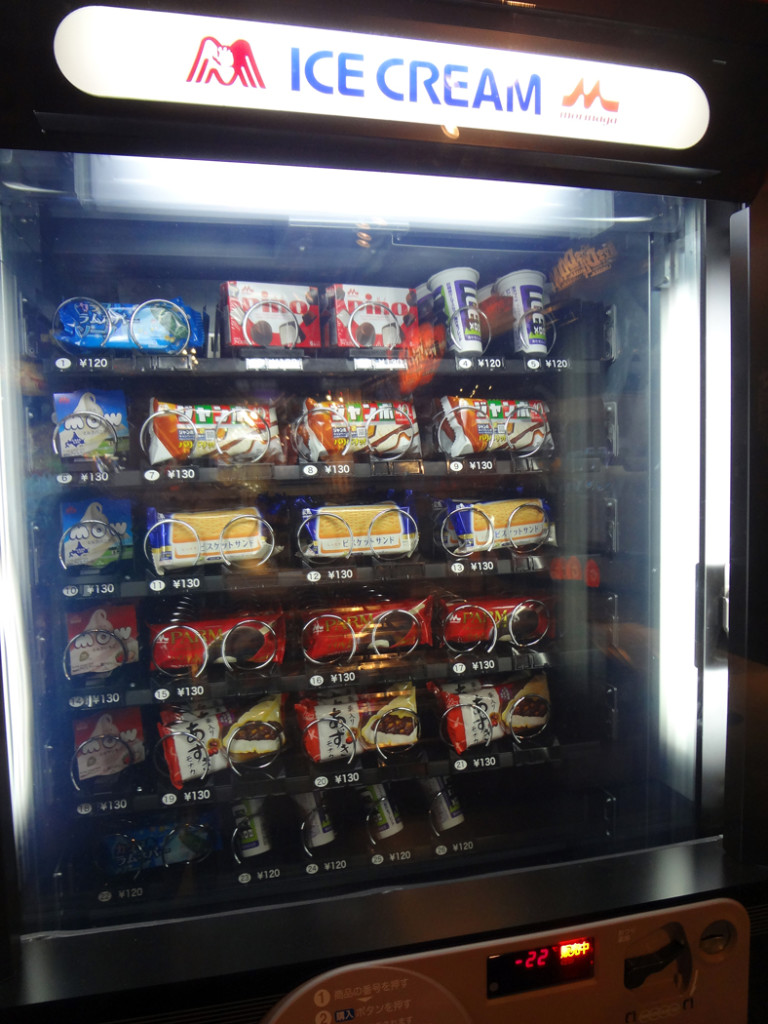
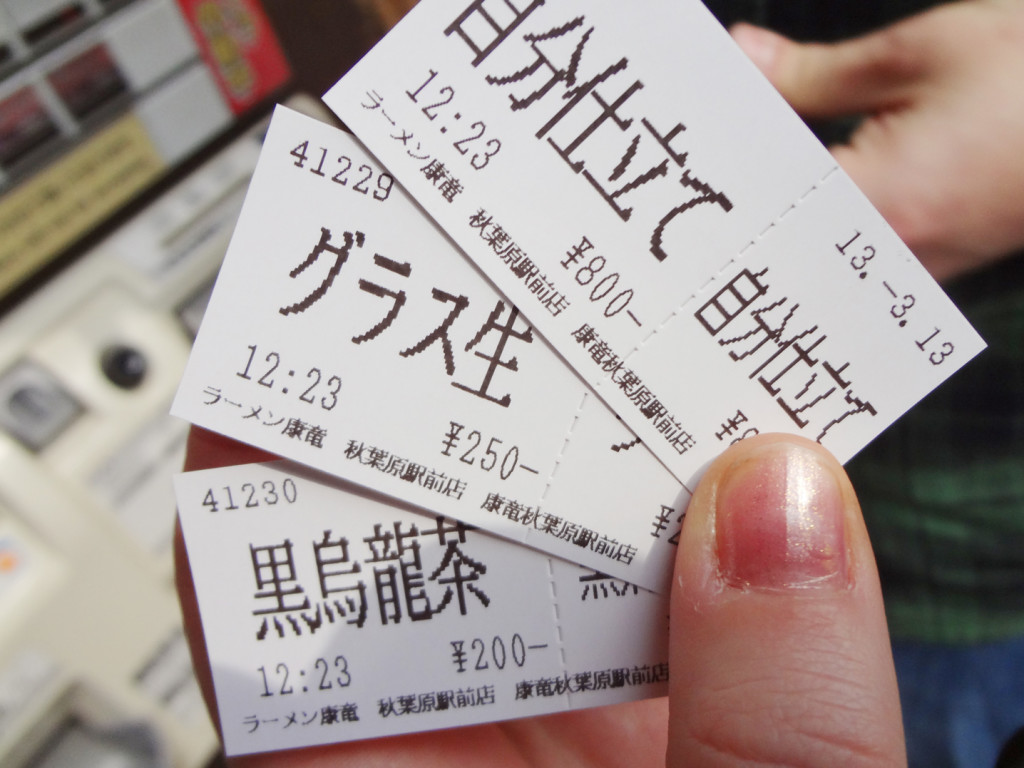
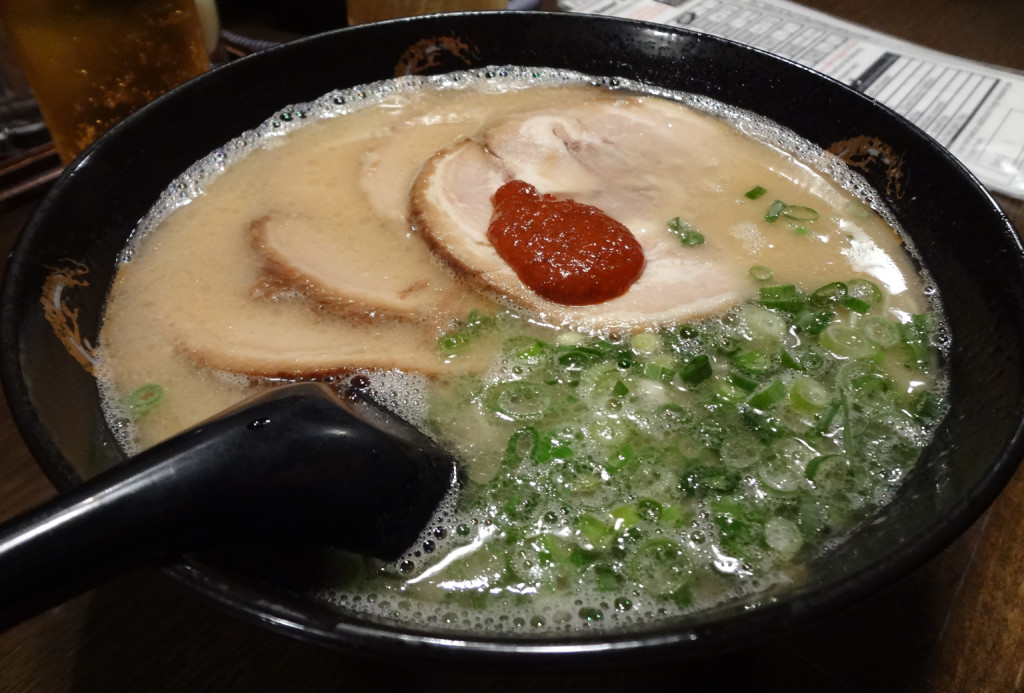
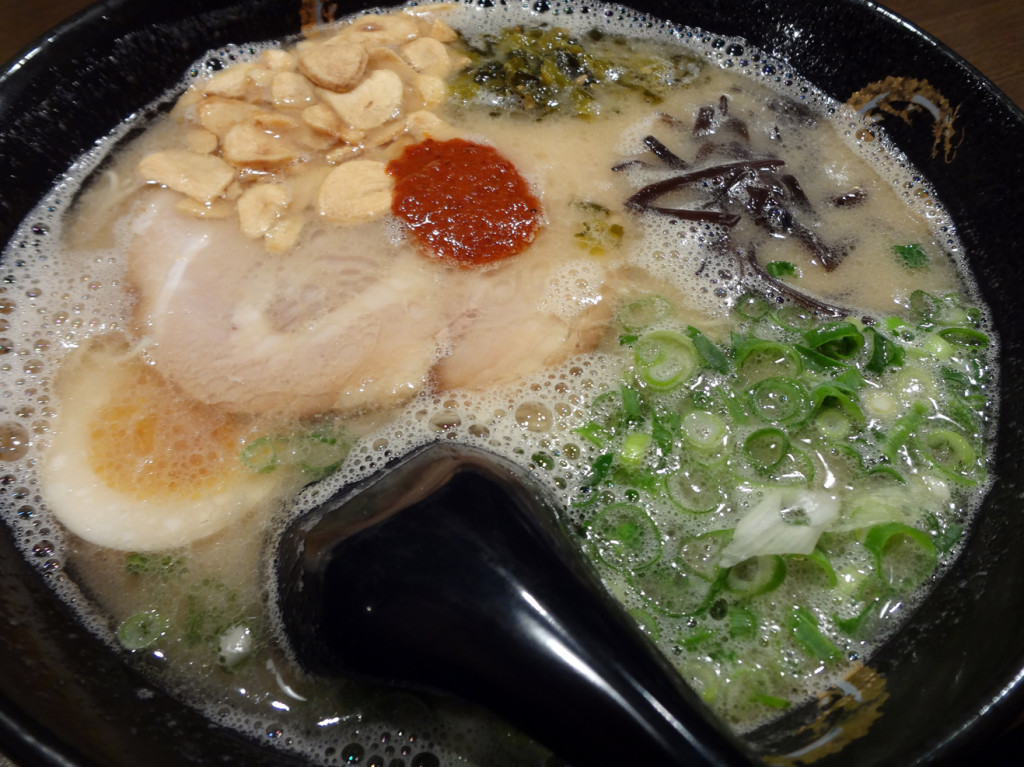
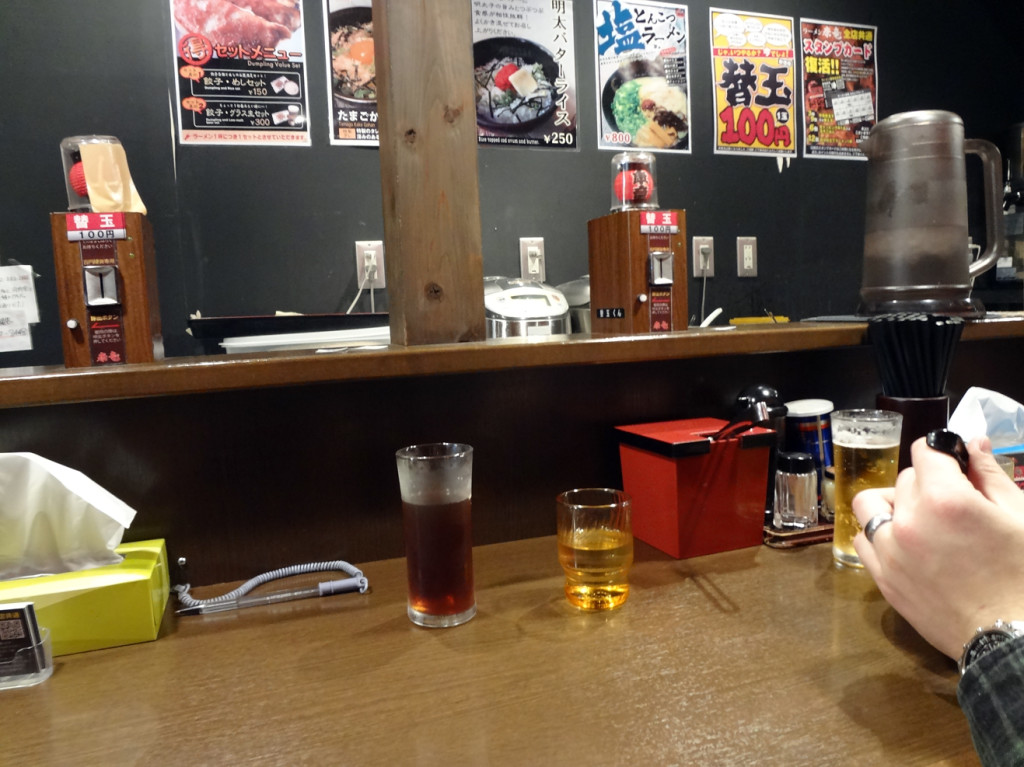
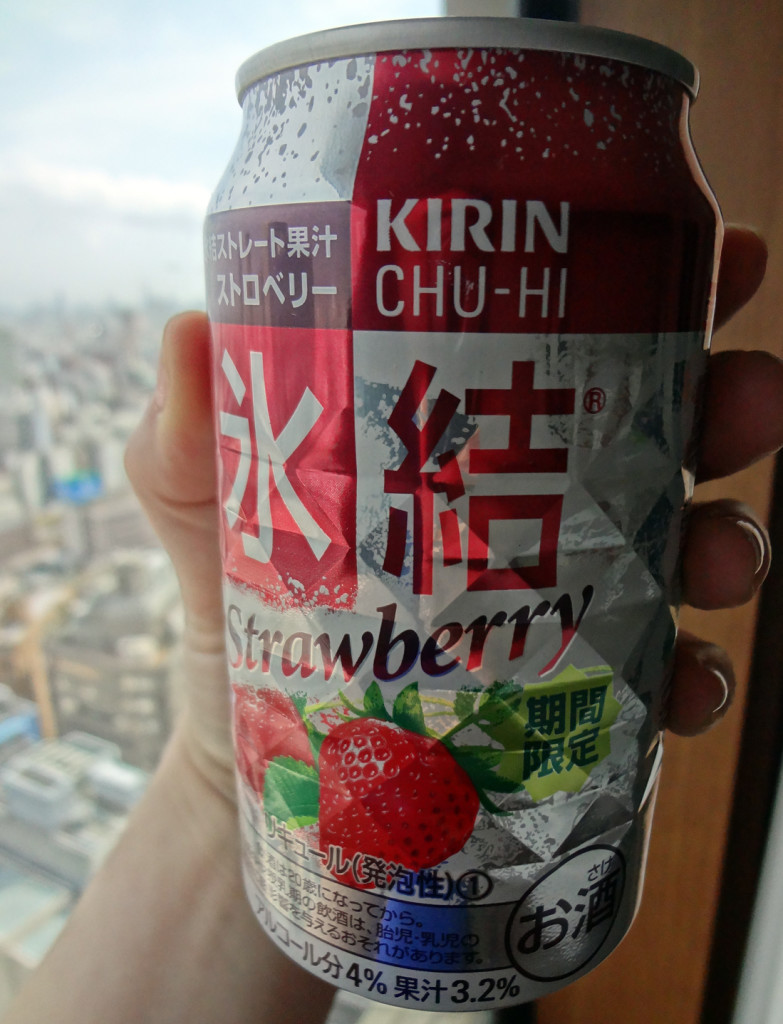
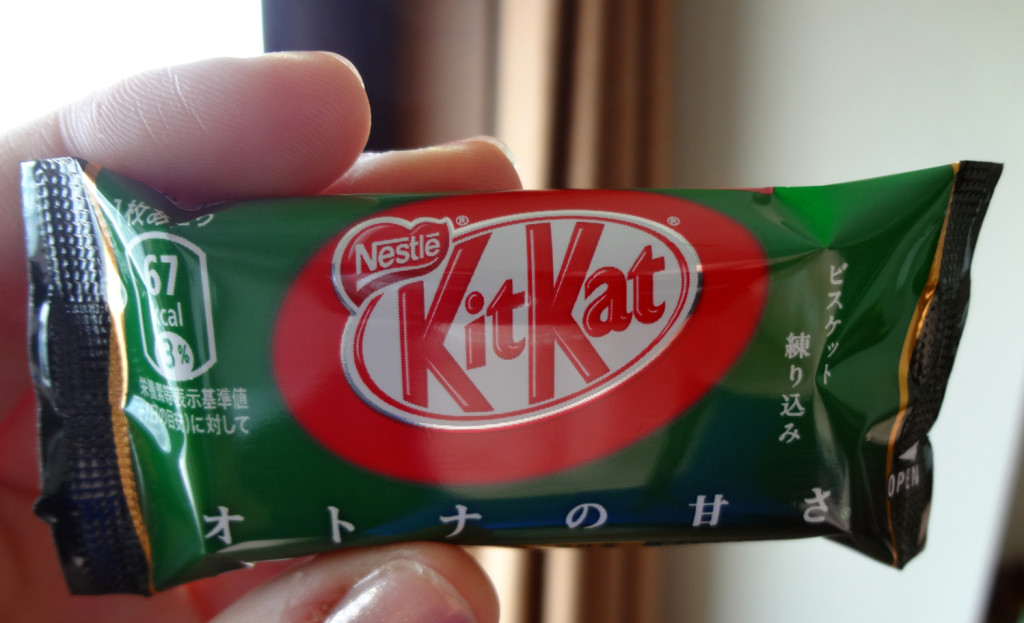
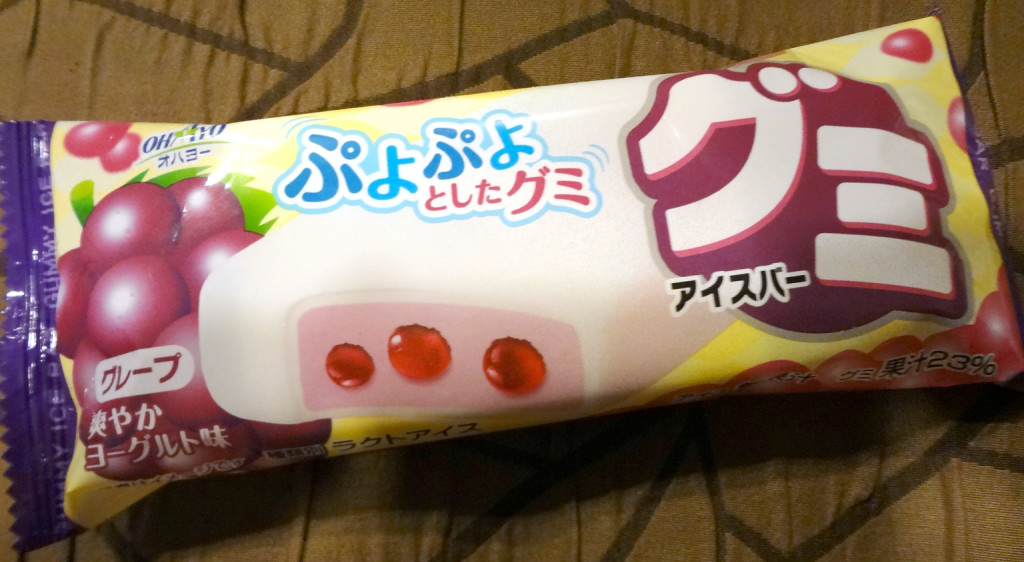
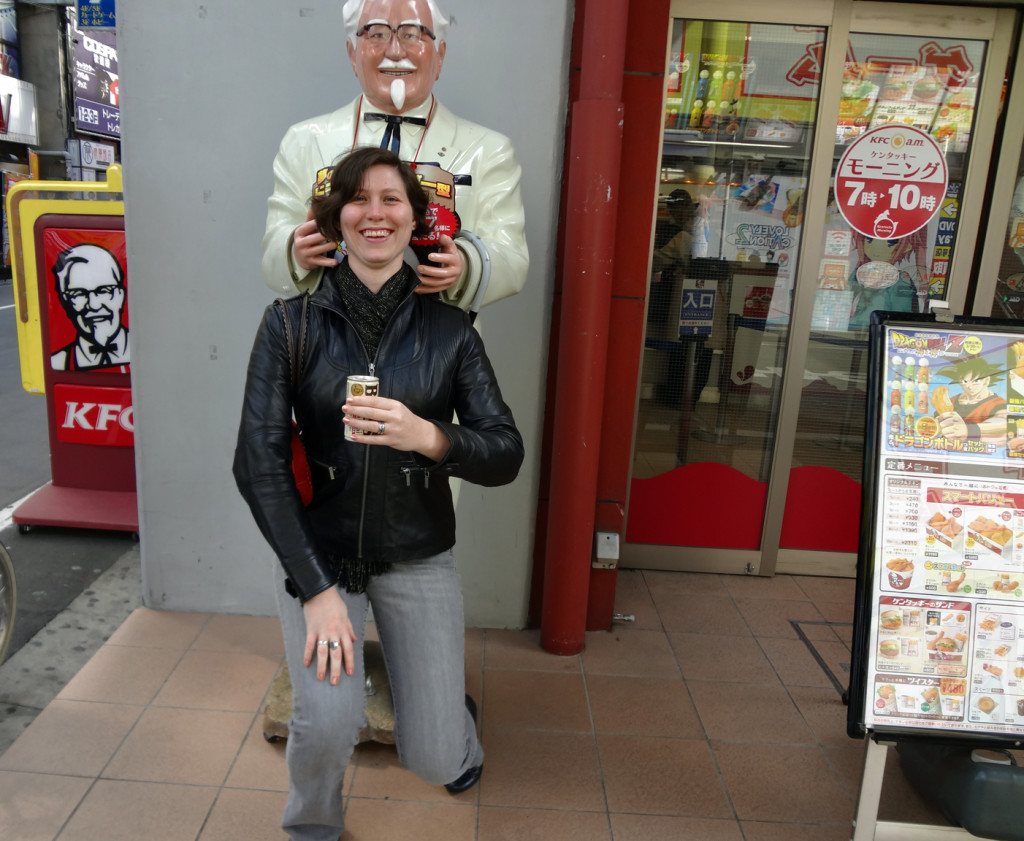
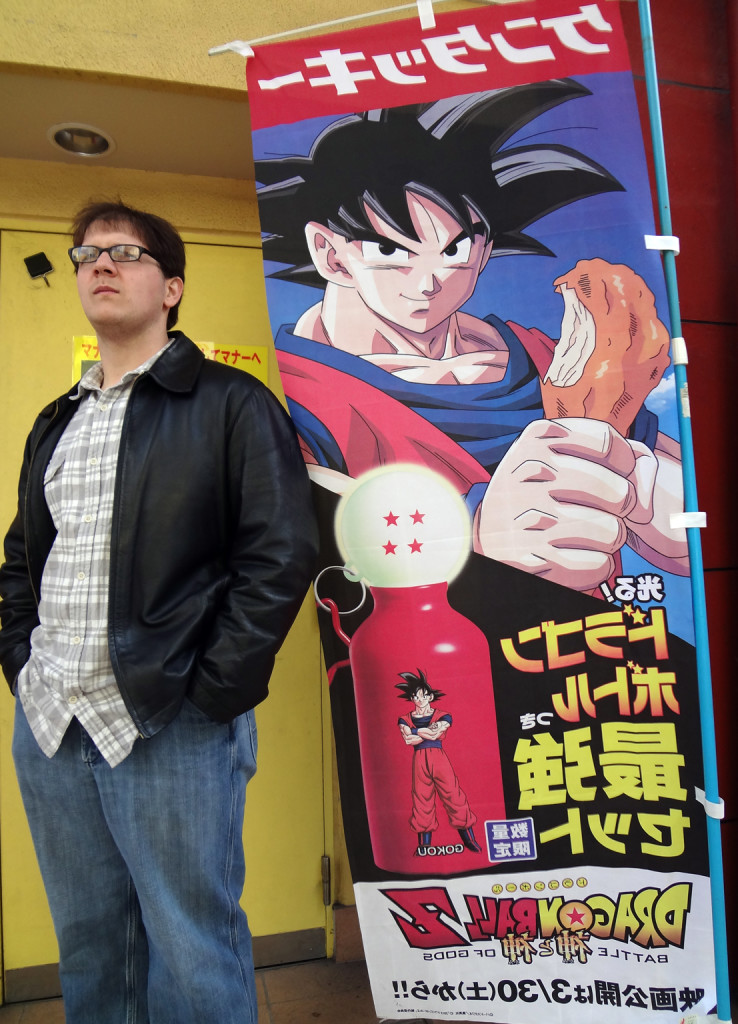
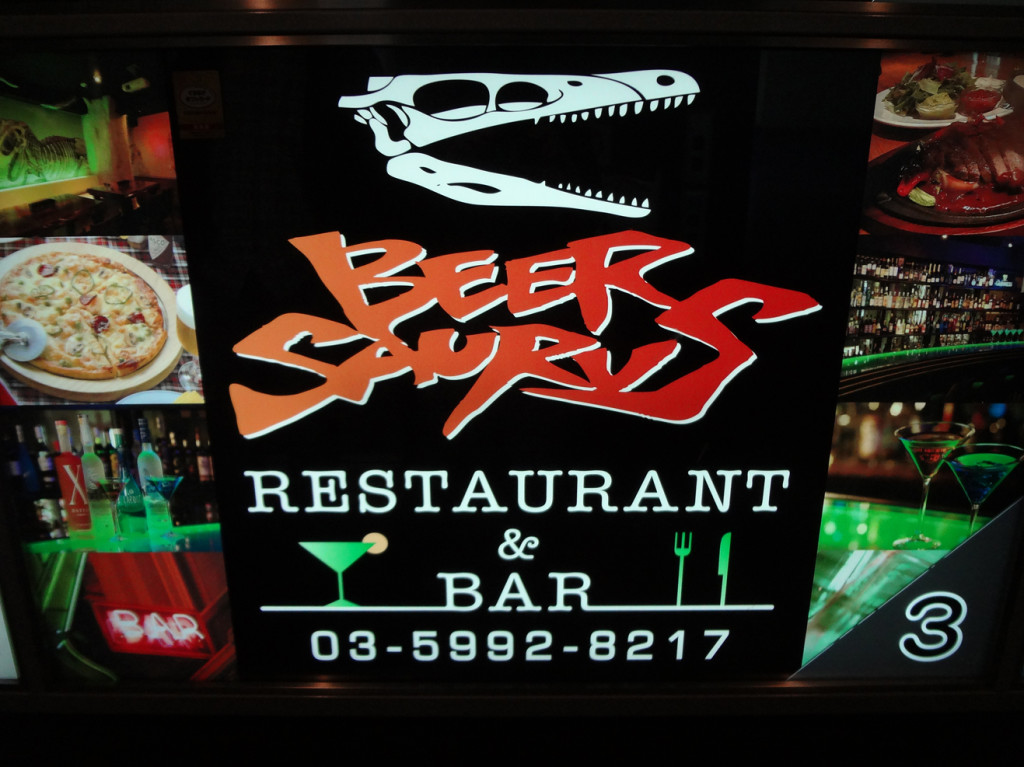
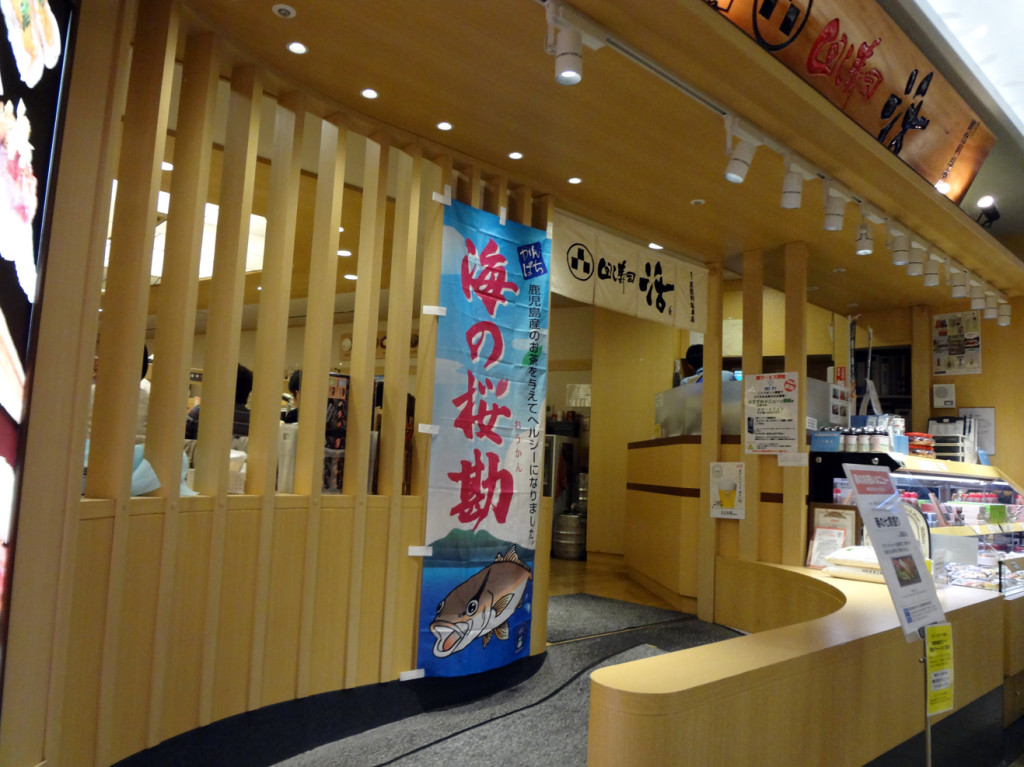
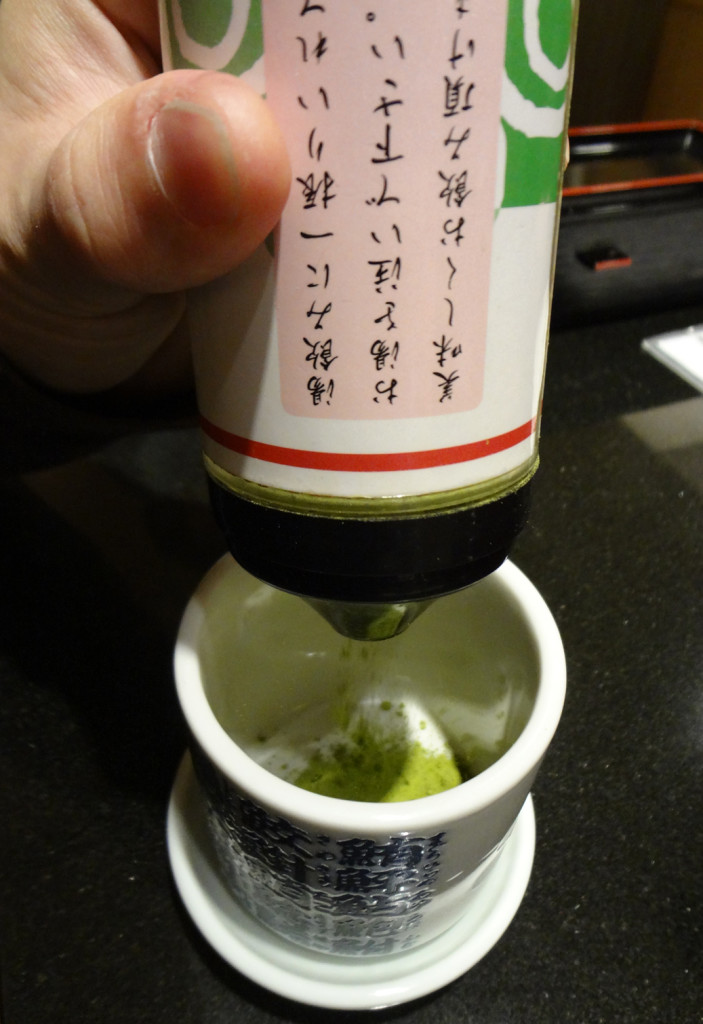
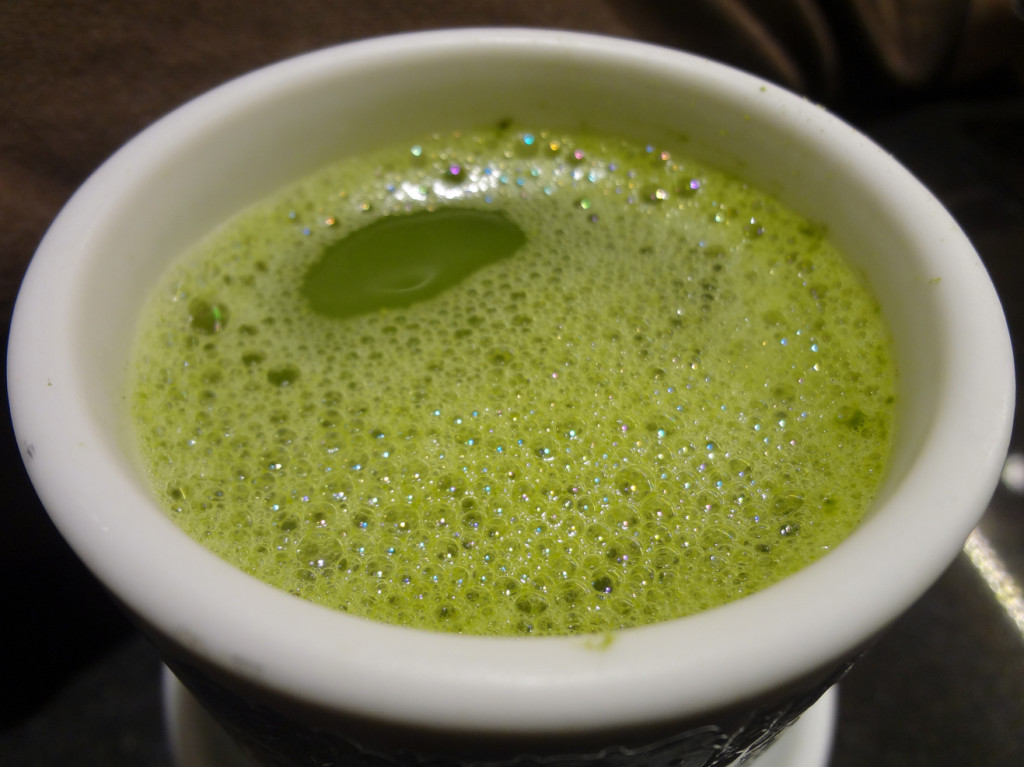
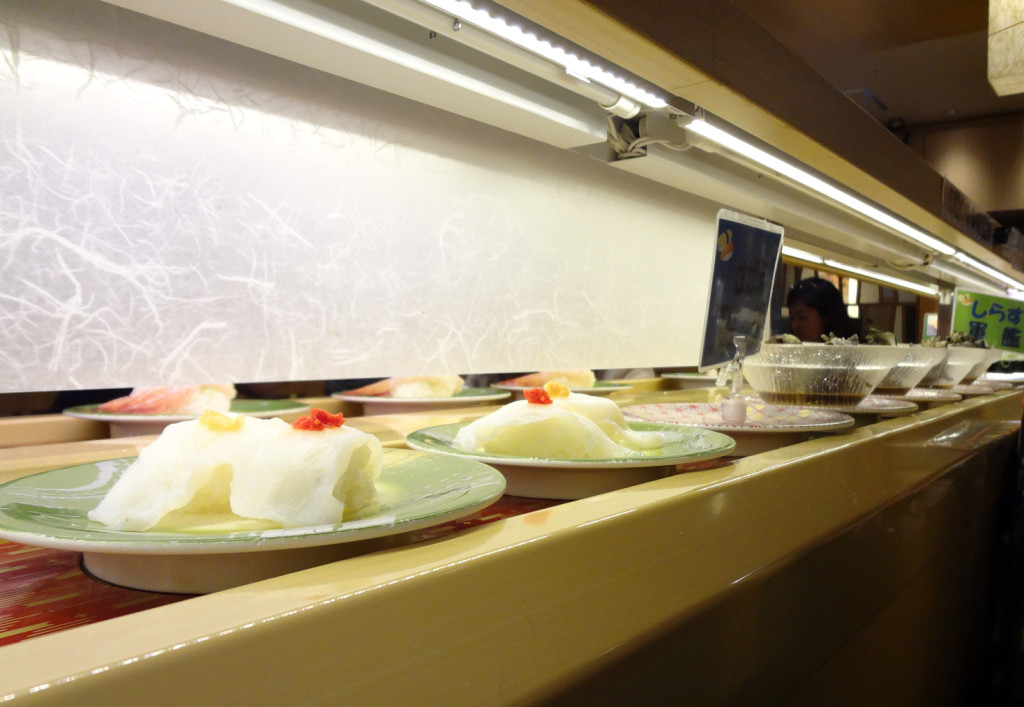
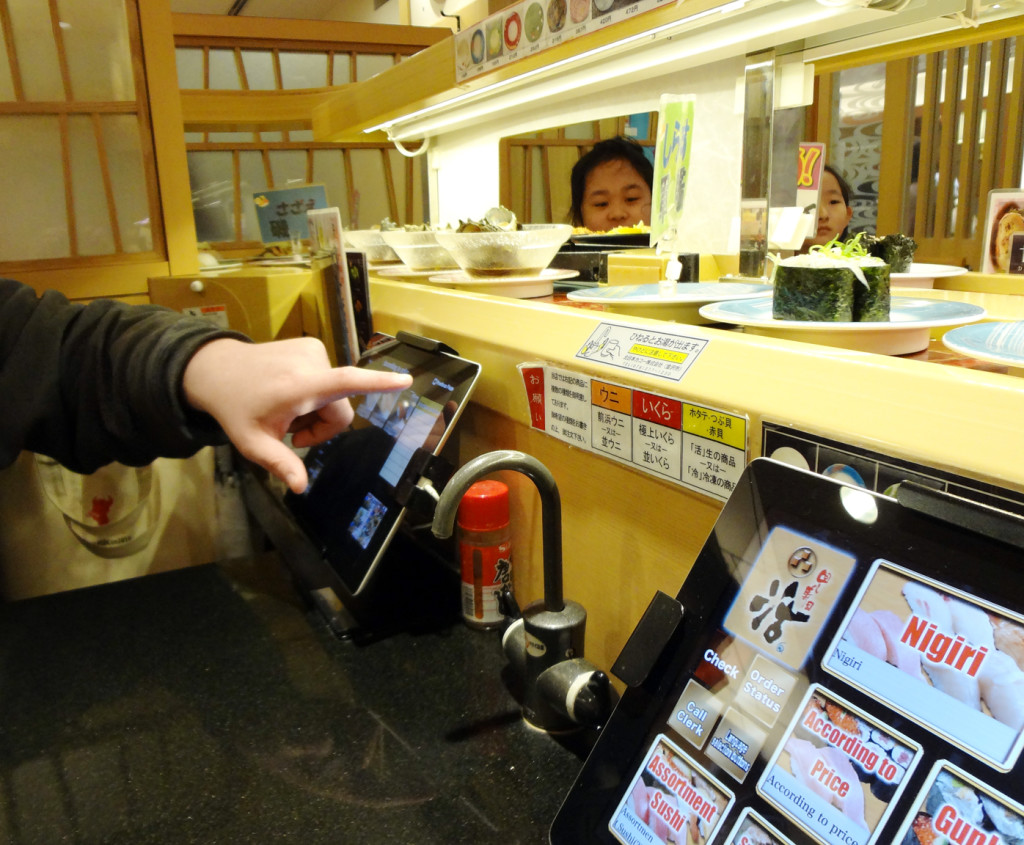
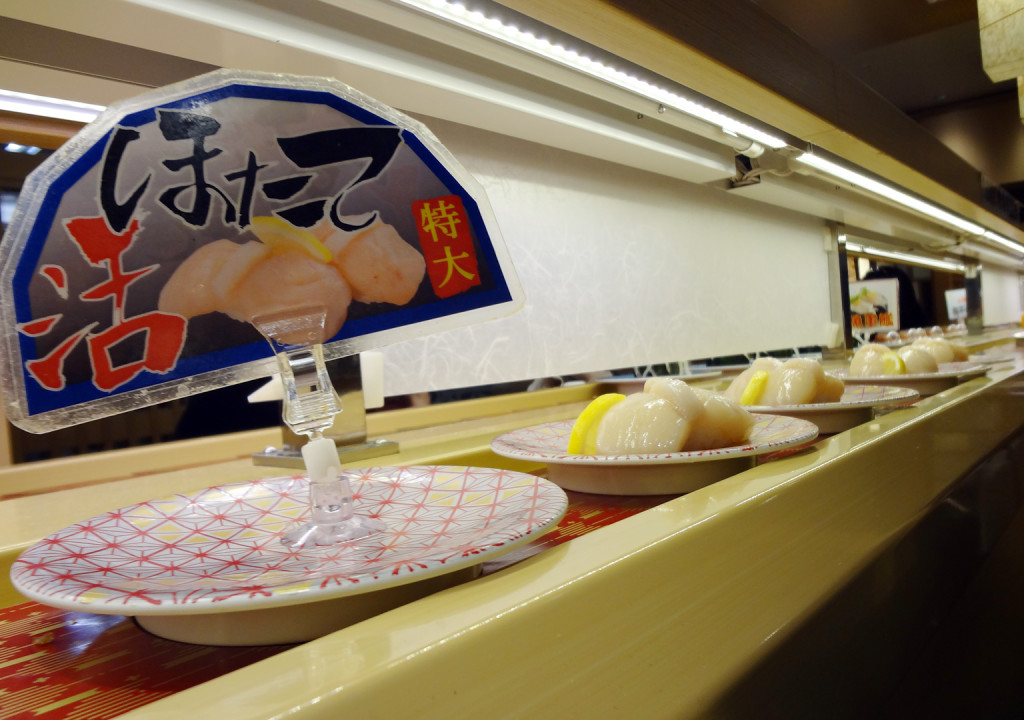
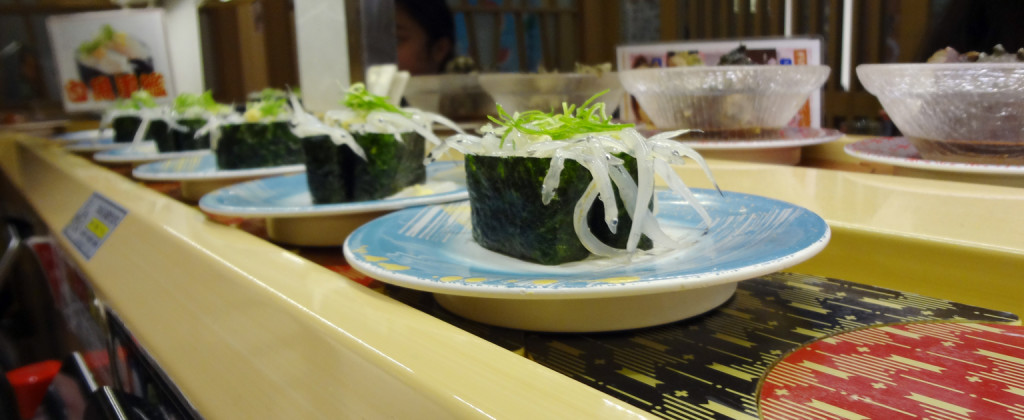
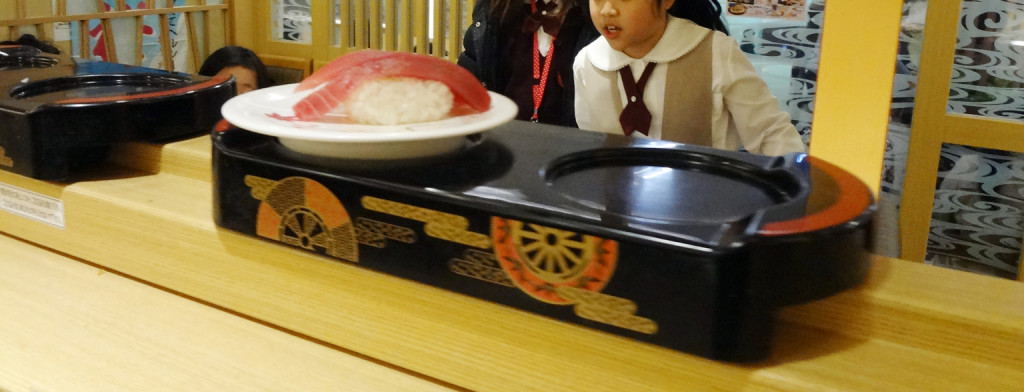
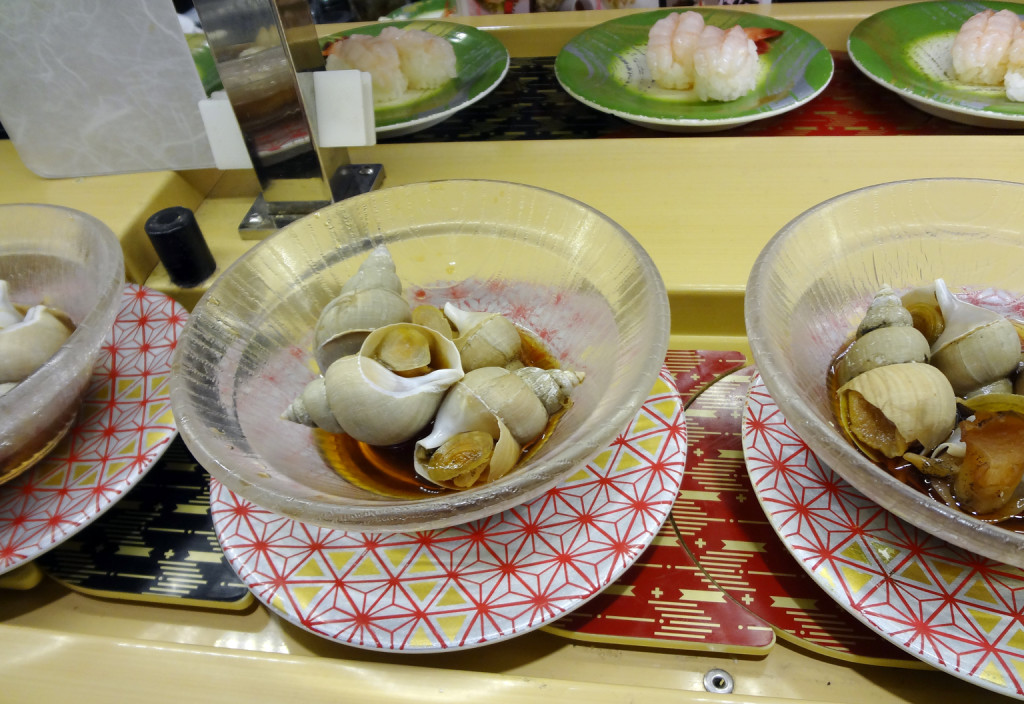
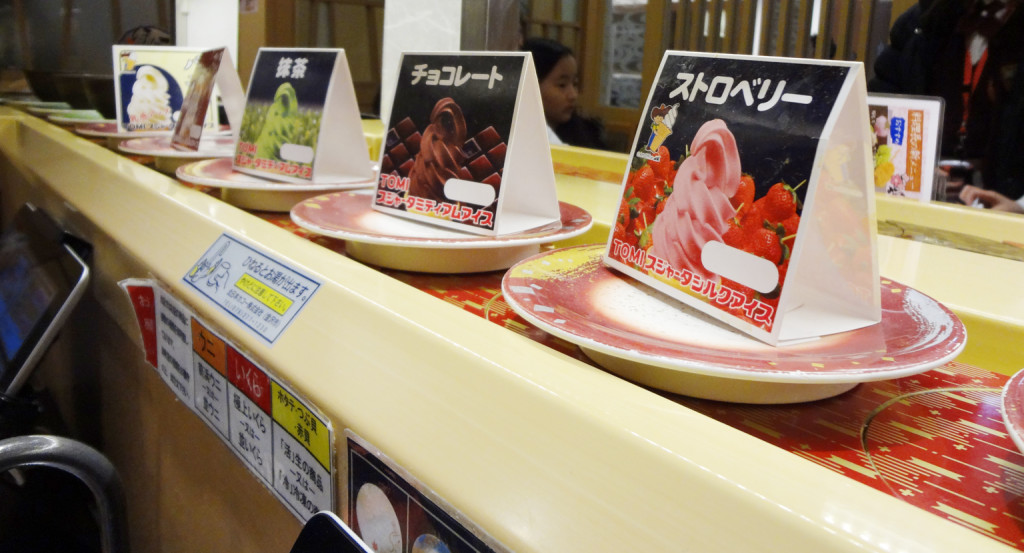
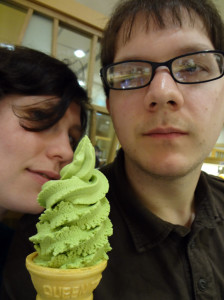
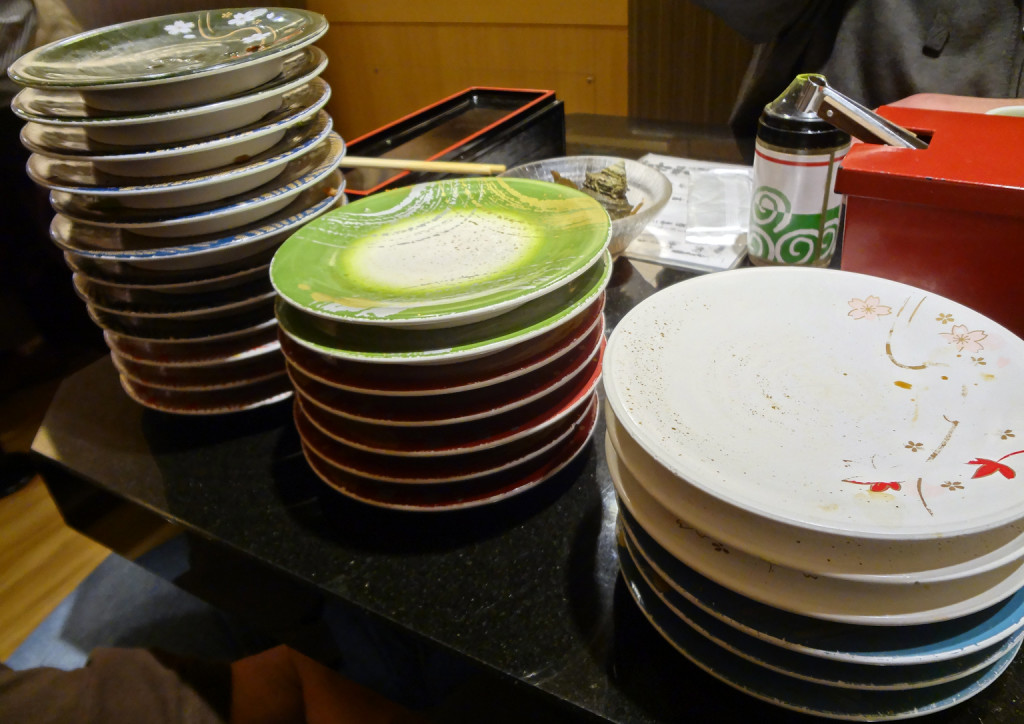
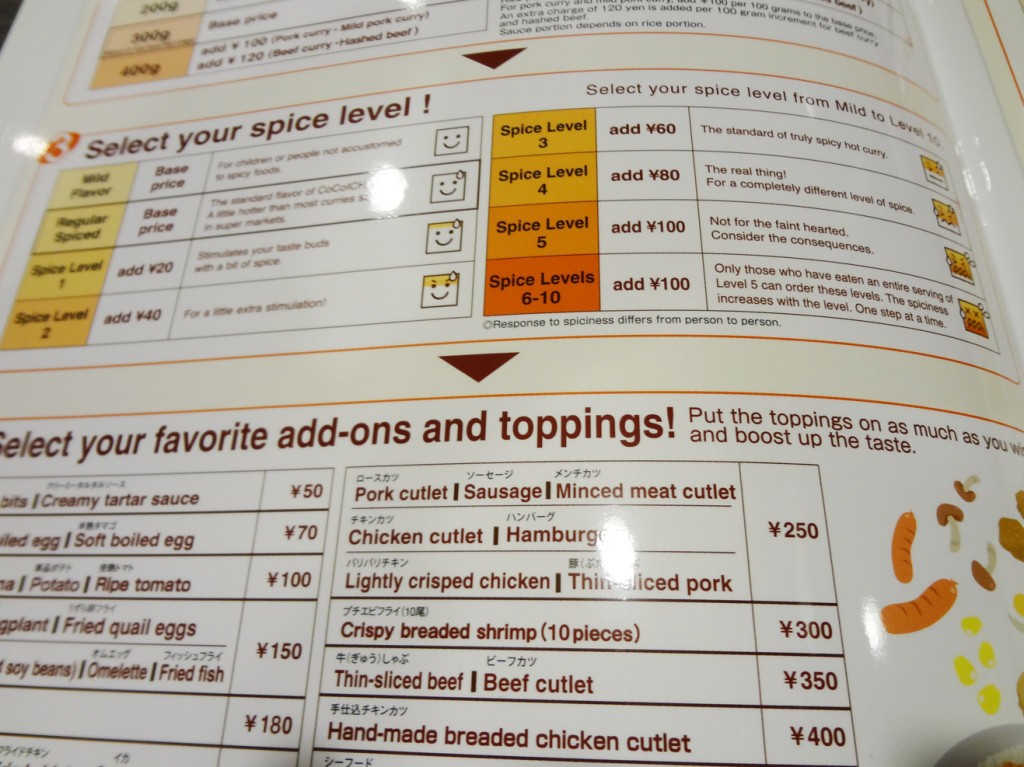
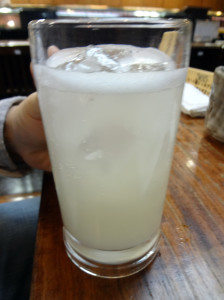
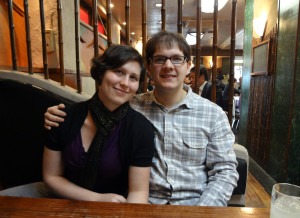
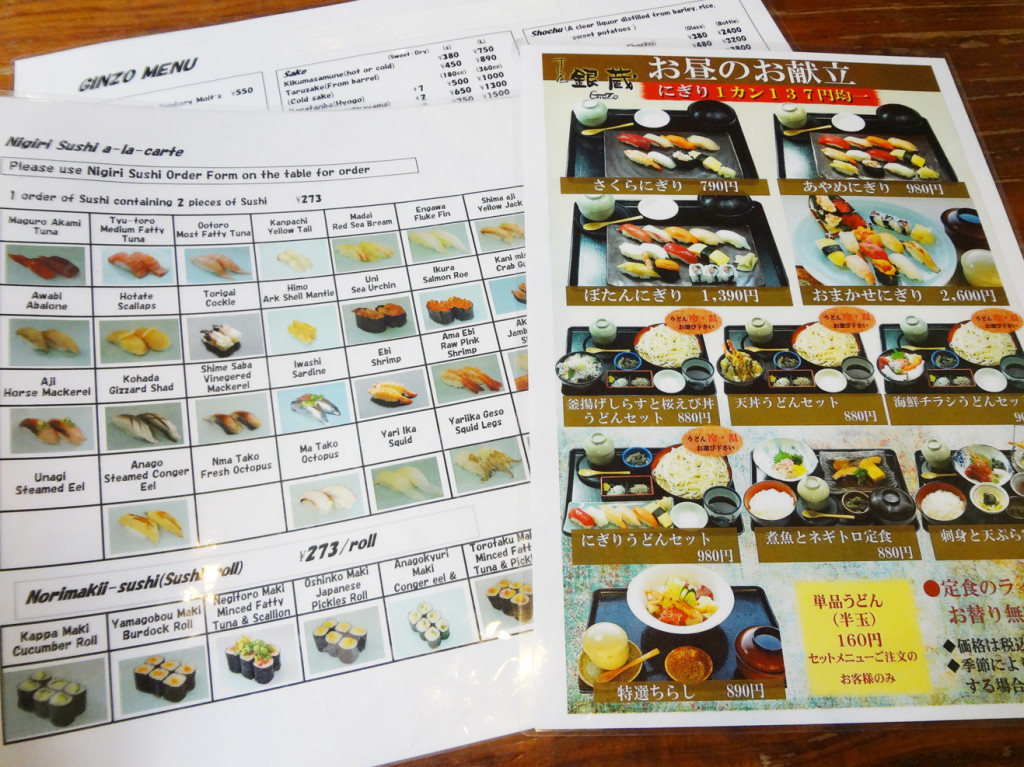
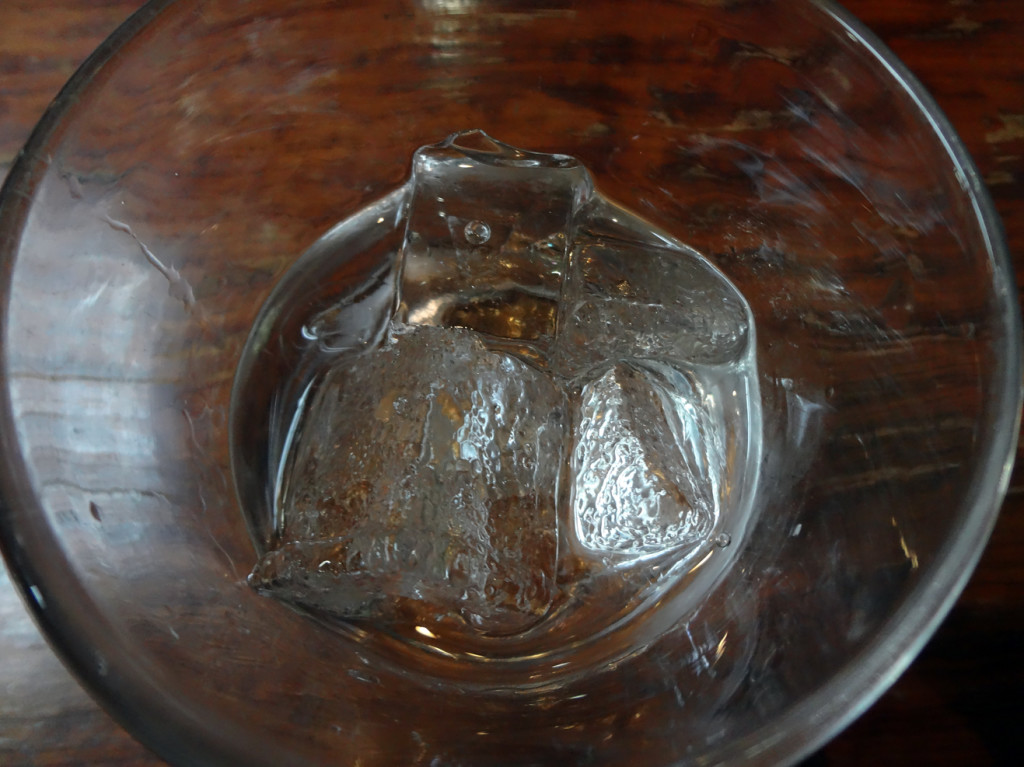
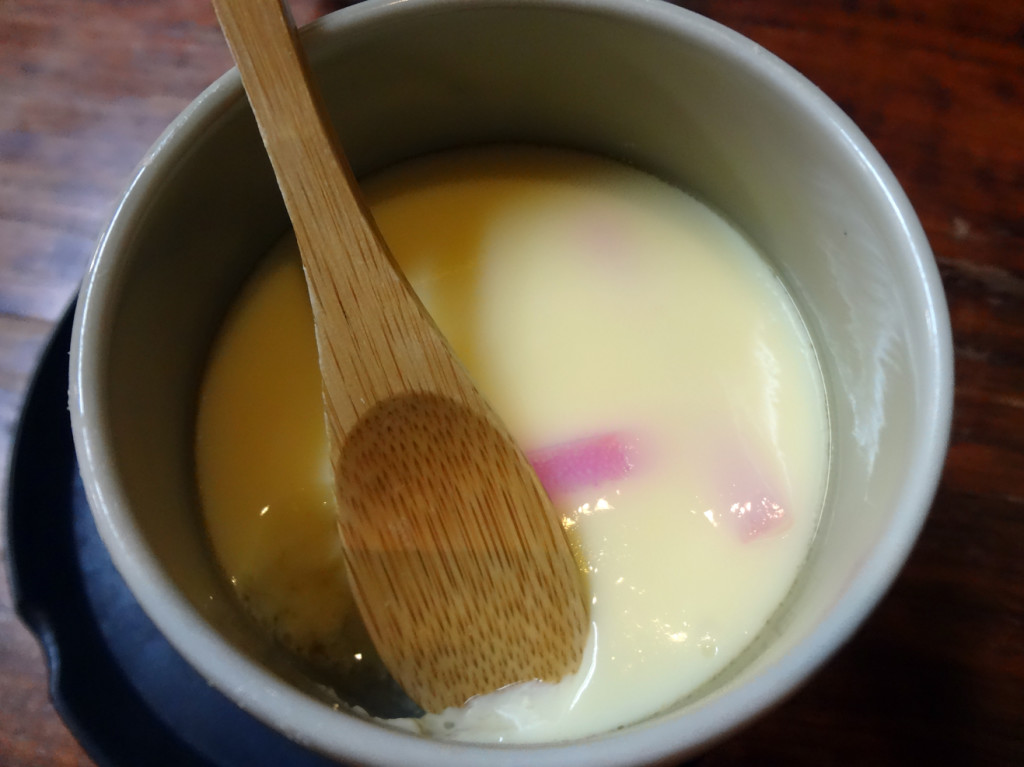
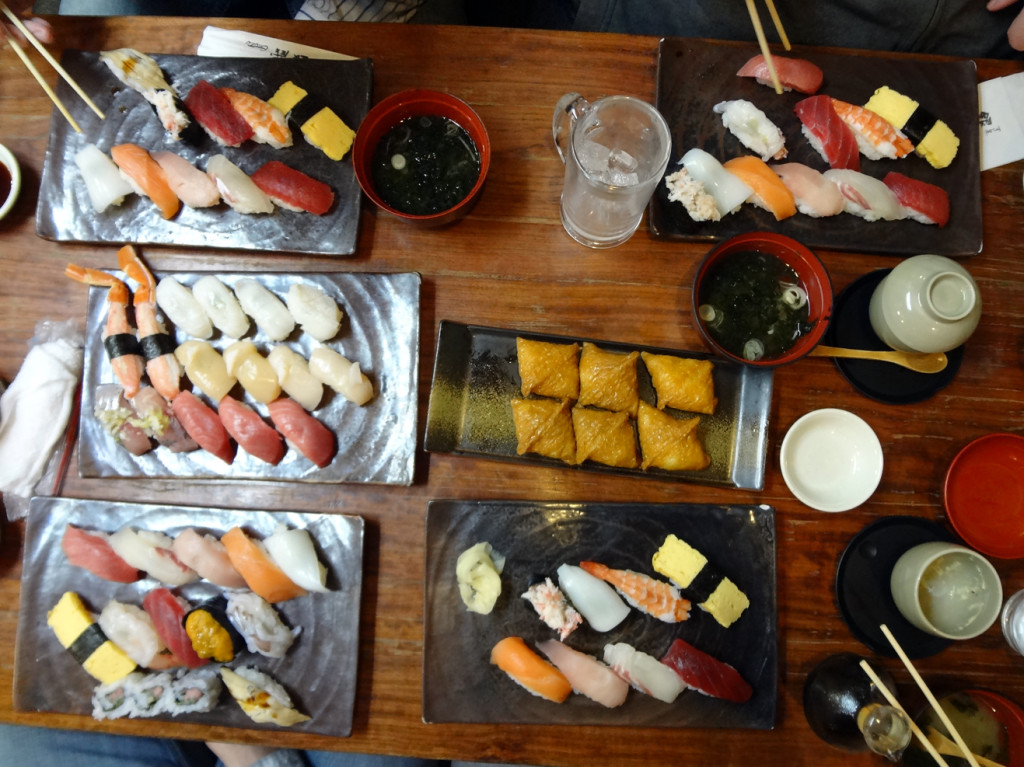

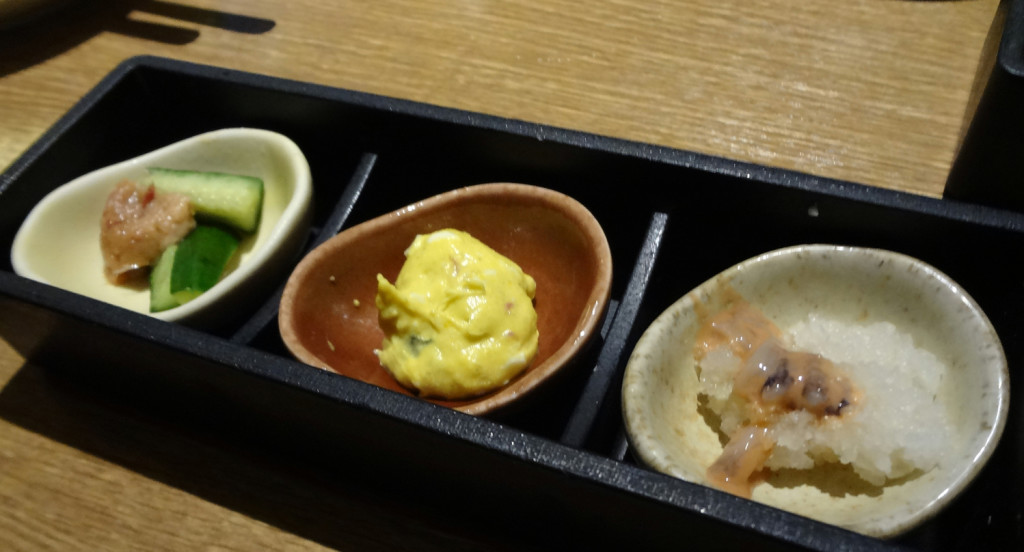
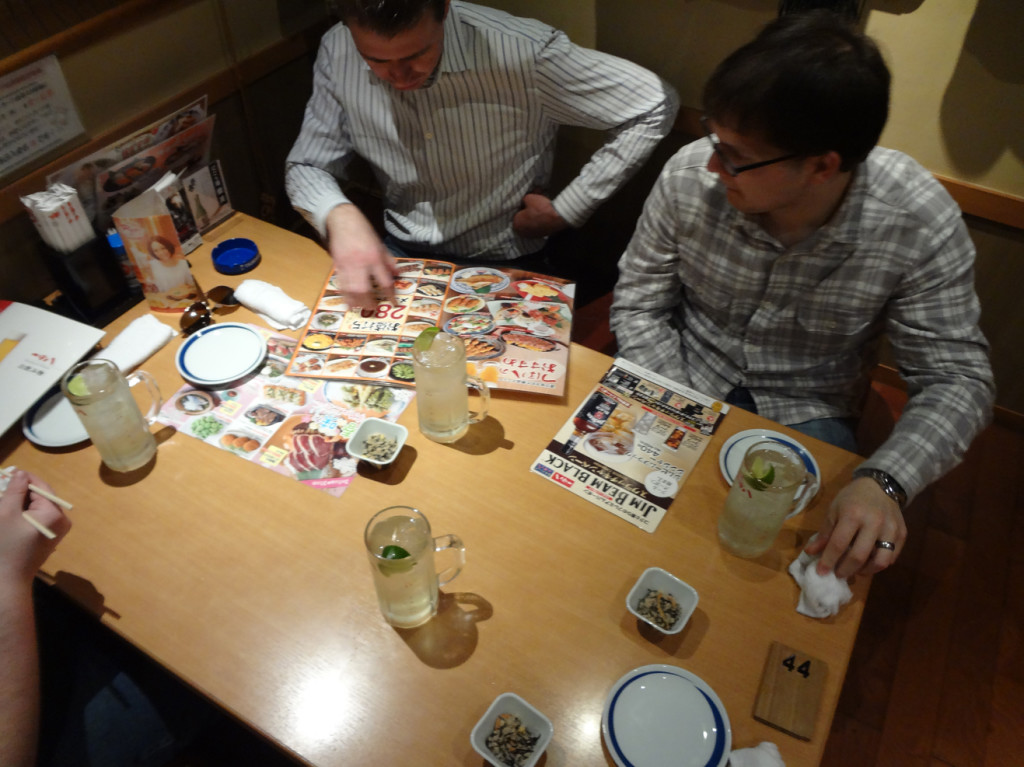
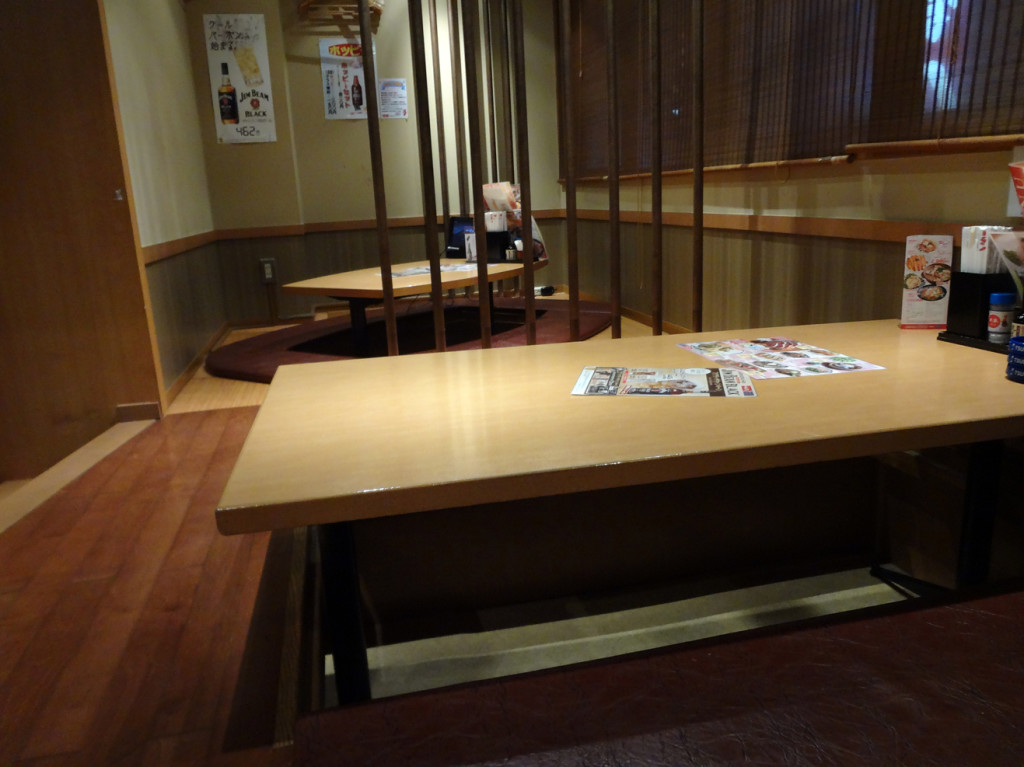
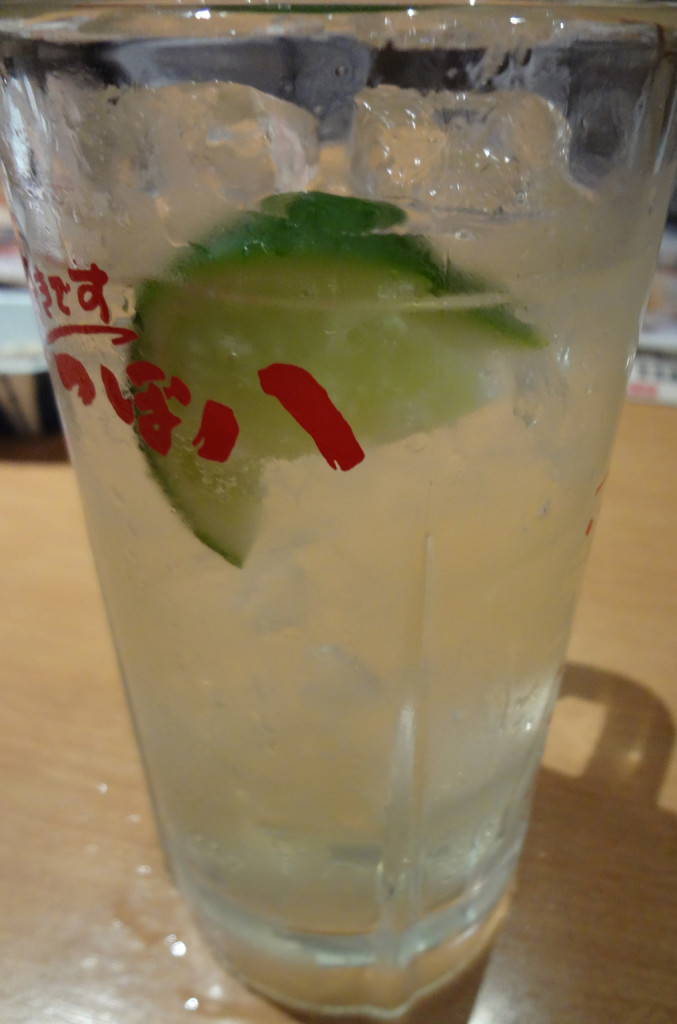
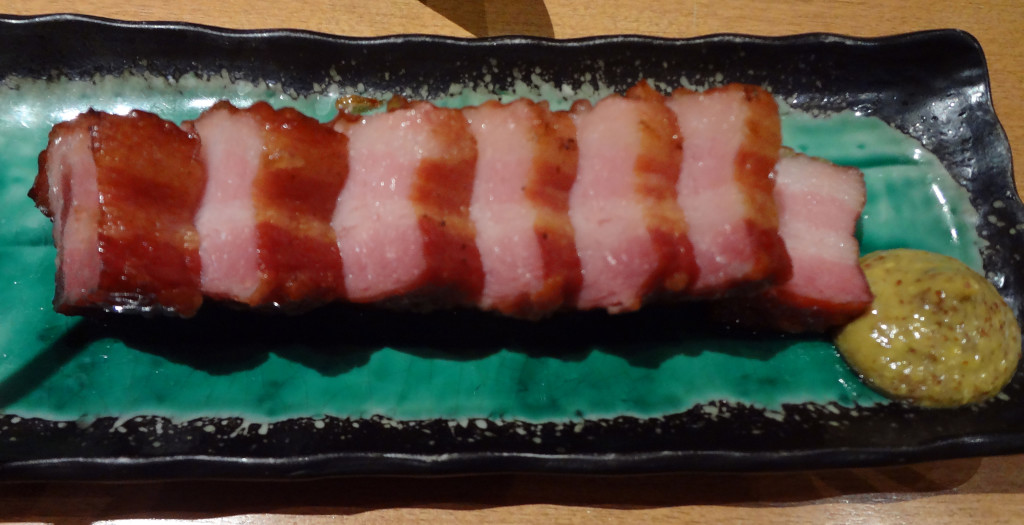
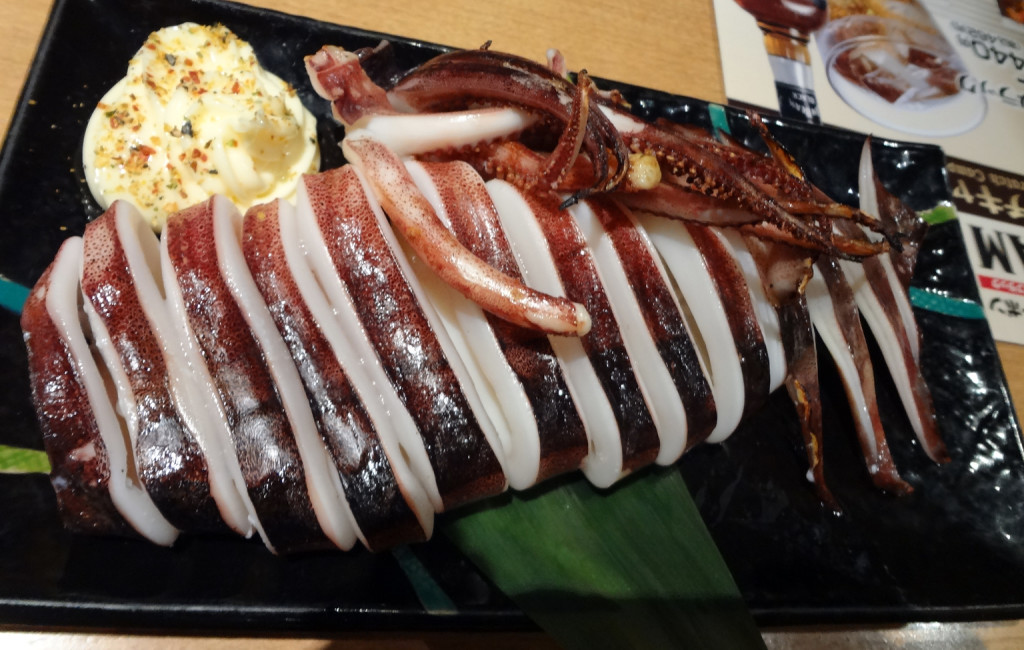
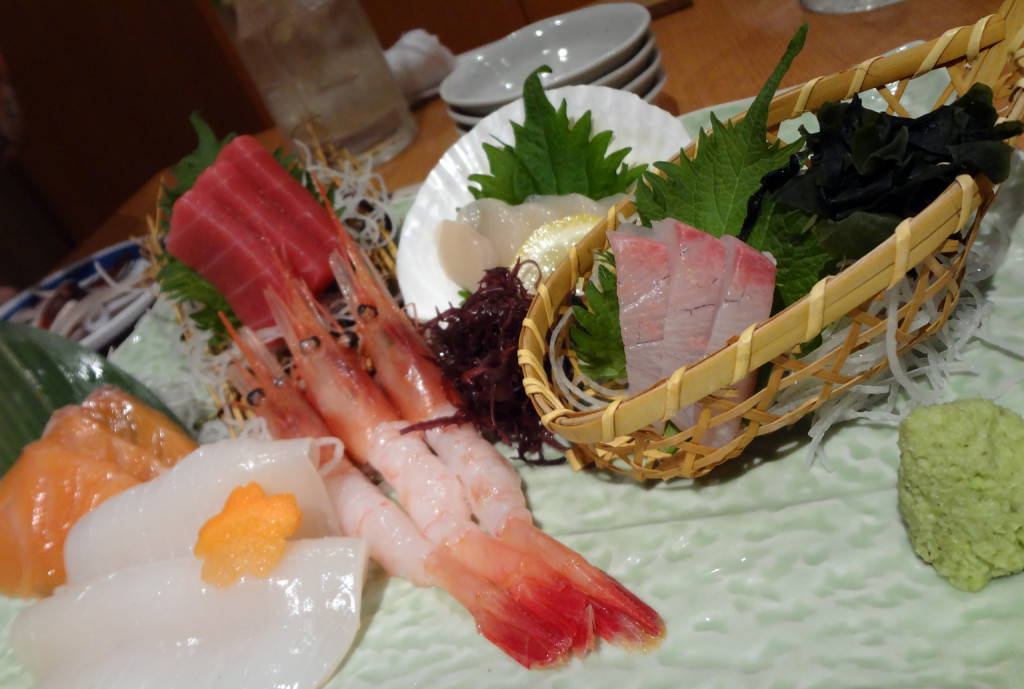
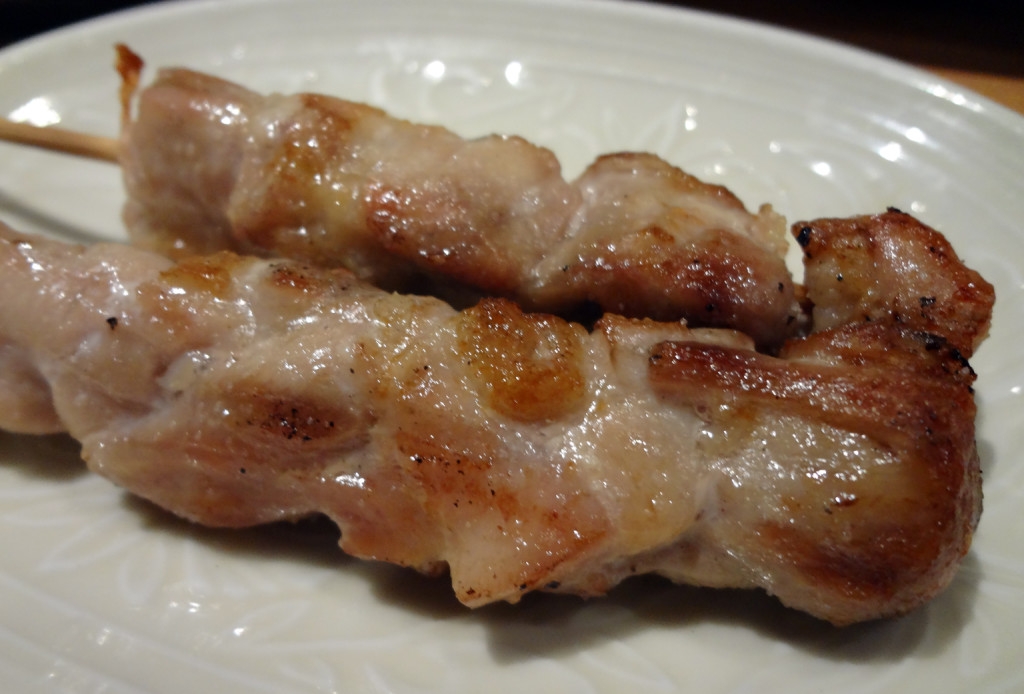
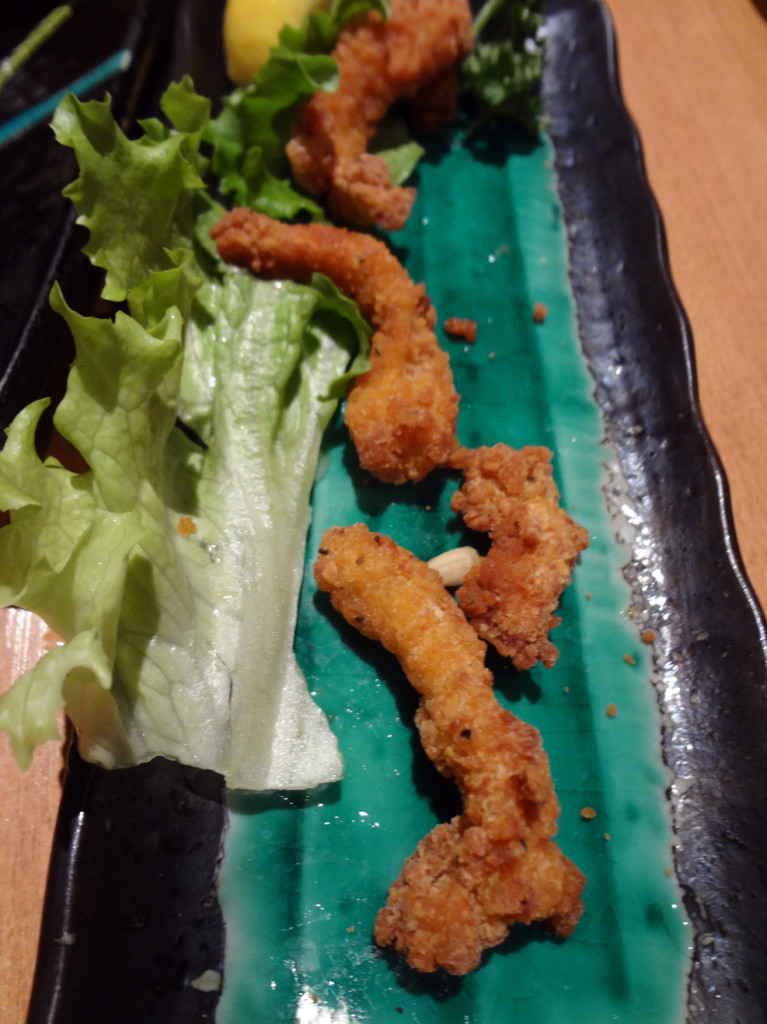
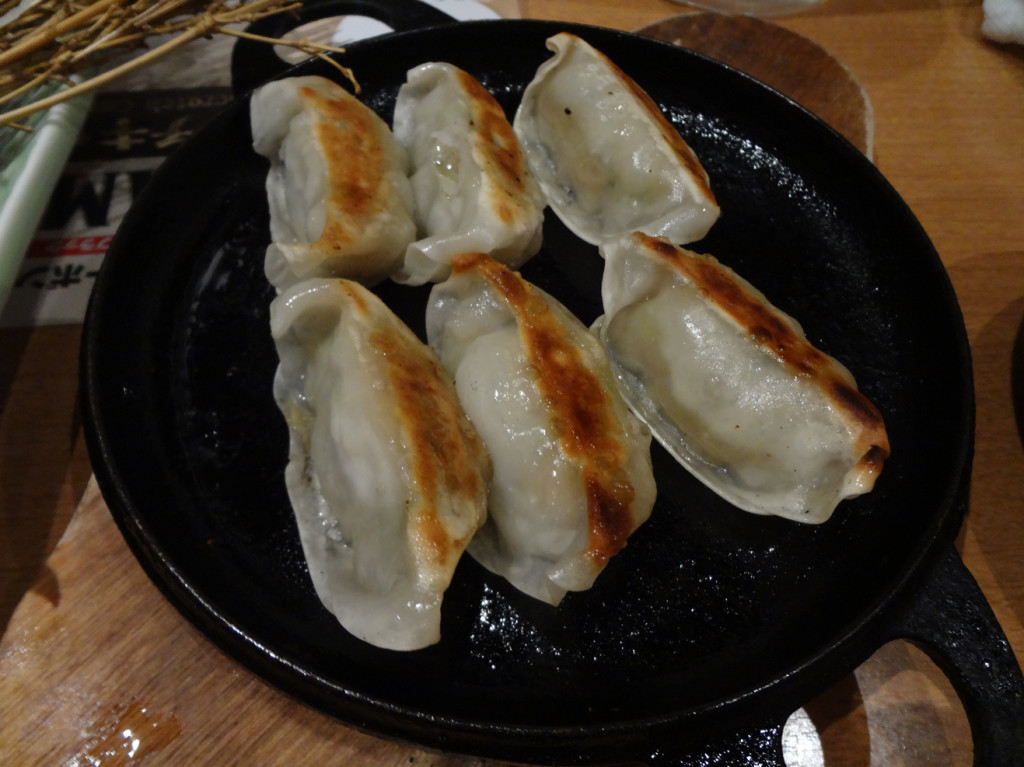
I love everything about this. You have really inspired me to look into traveling to Japan at some point in the future, because, hell yeah I want to try a grape ice cream bar with jelly inside (among other things). This was so much fun to read! 🙂
Thanks so much Emma! This post was definitely a labor of love and to hear that you enjoyed it makes it all worthwhile!
I definitely encourage you to travel to Japan. I have been very lucky to go to some great places, but I have rarely been on a trip that inspired the thoughts: 1) I need to get back here ASAP and 2) I could really just stay here for a few months. It really is one hell of a thing to visit the largest city in the world!